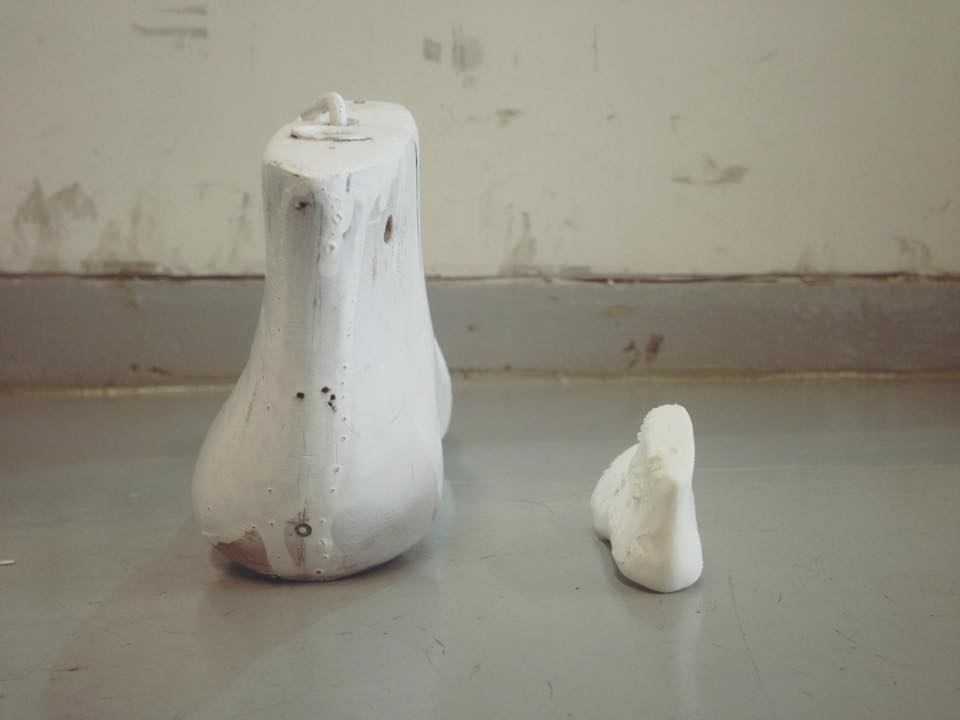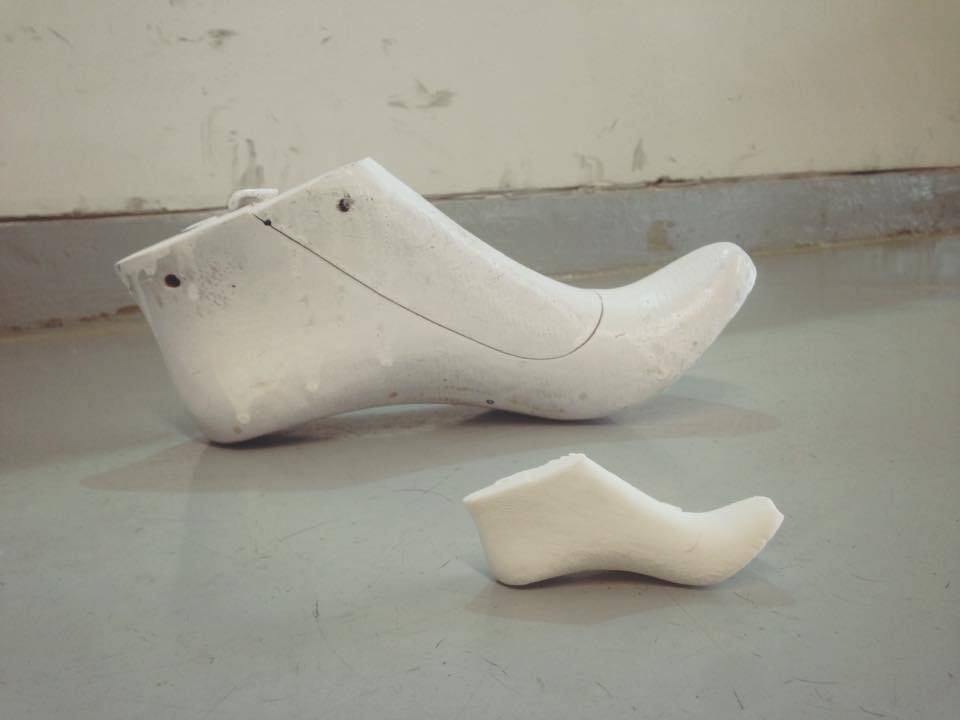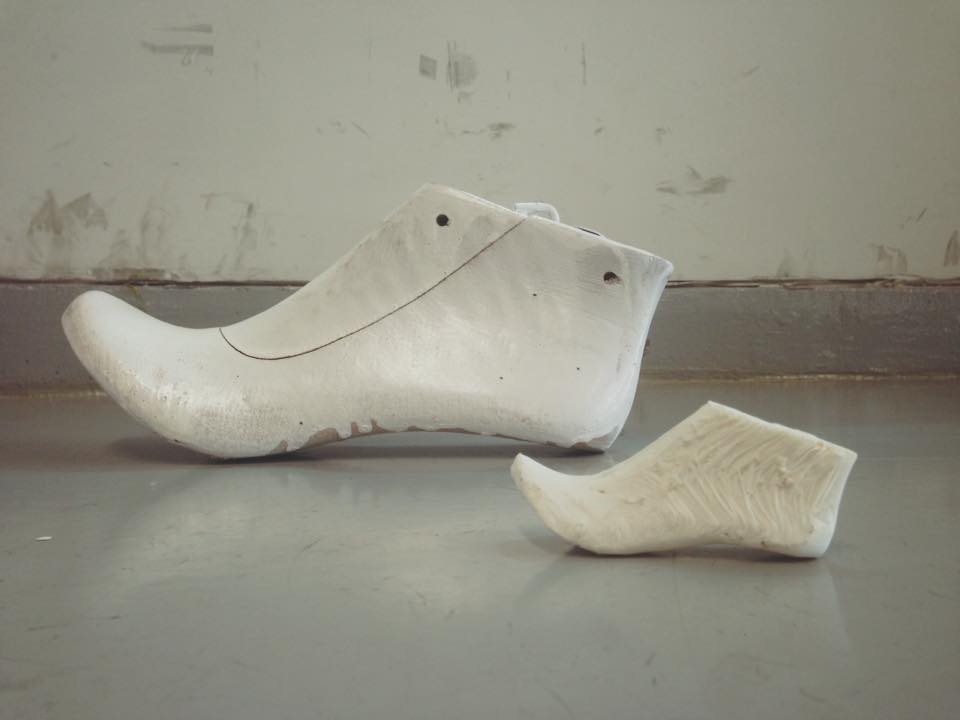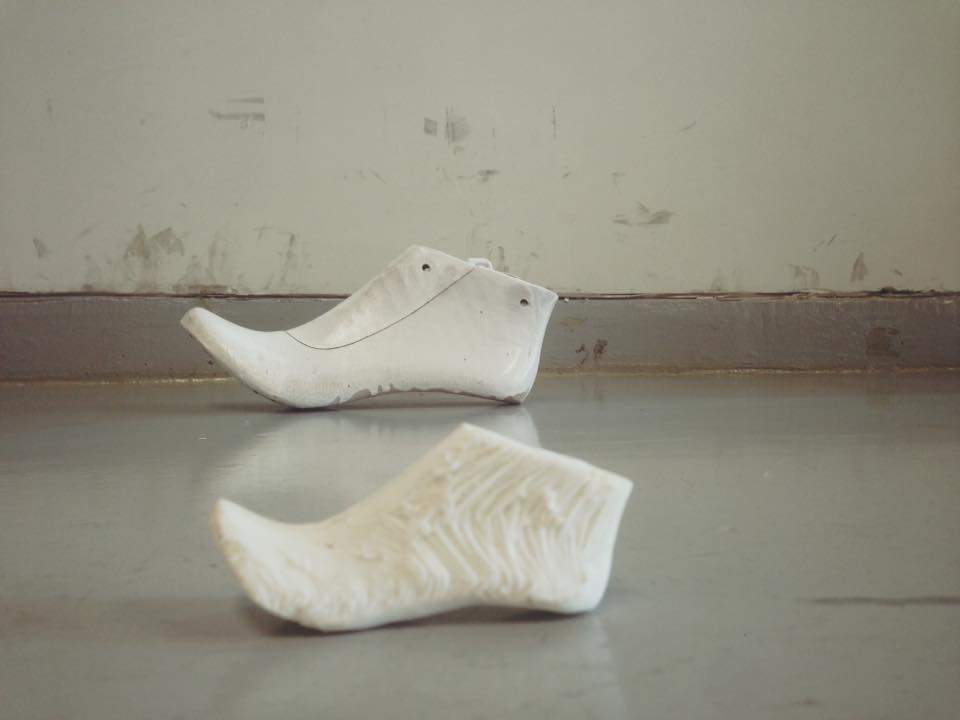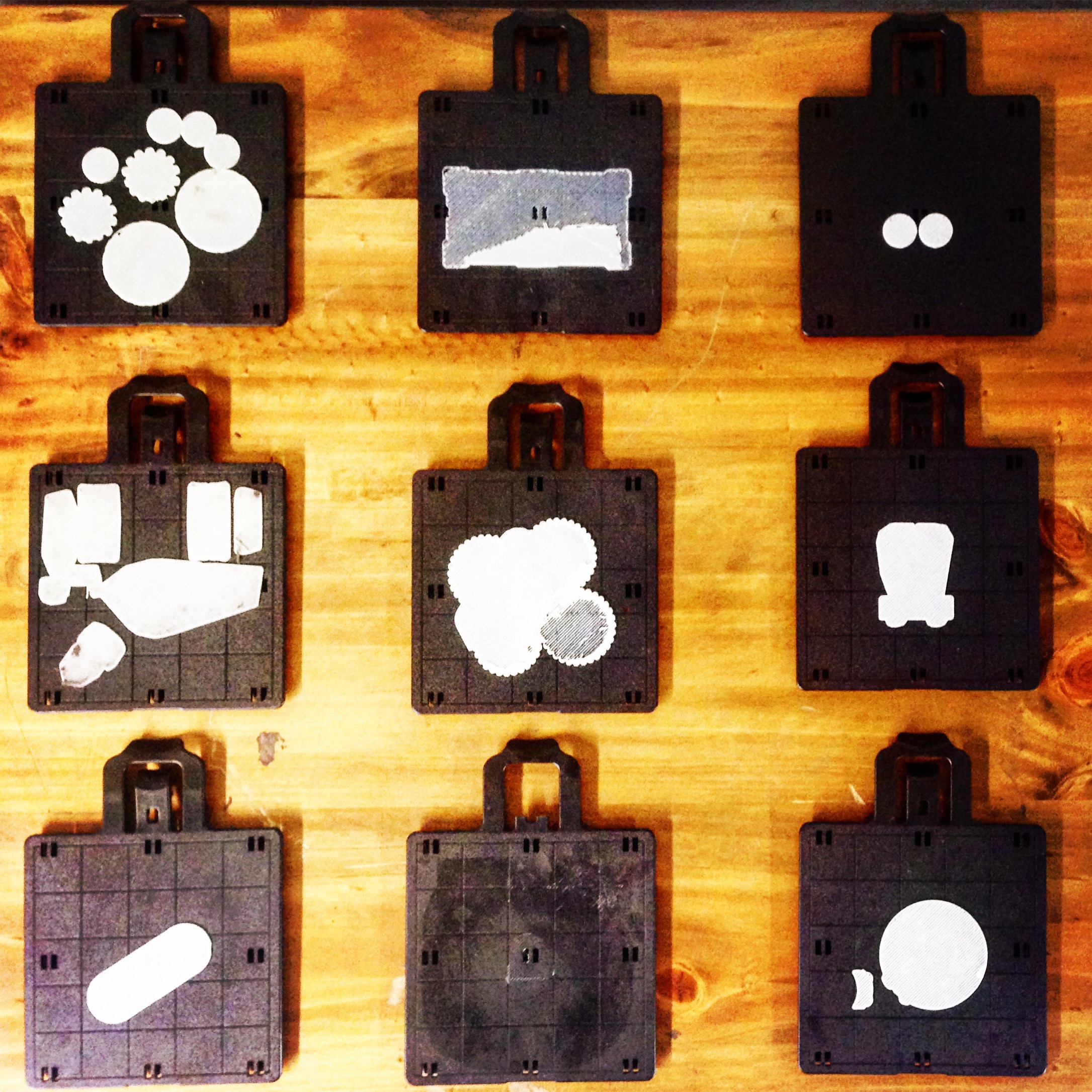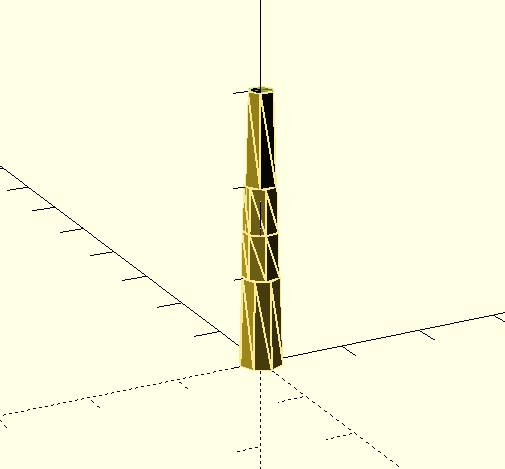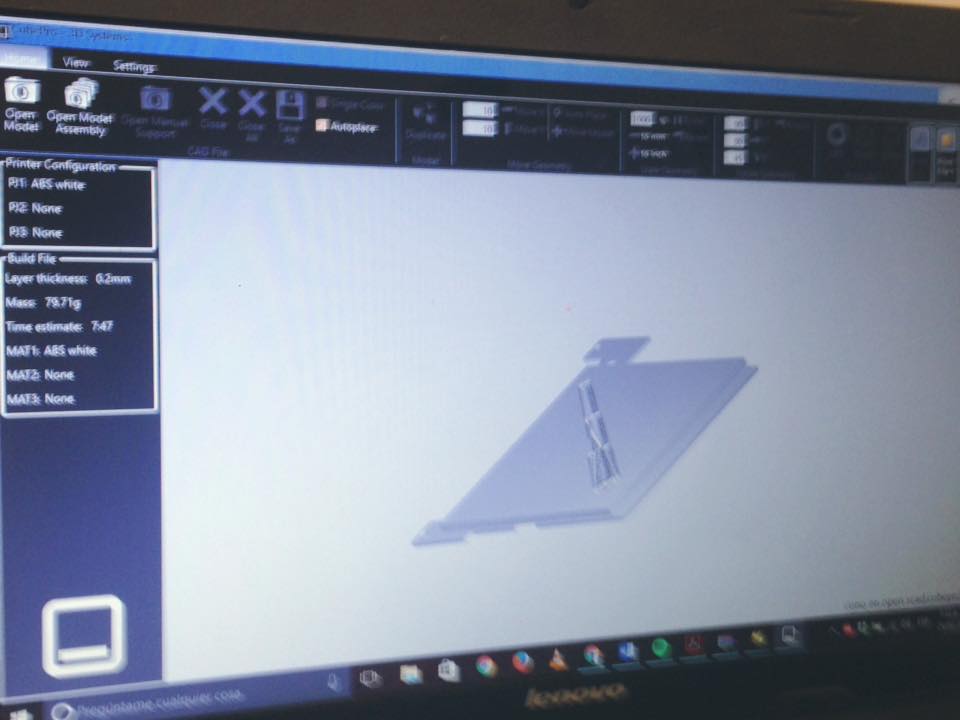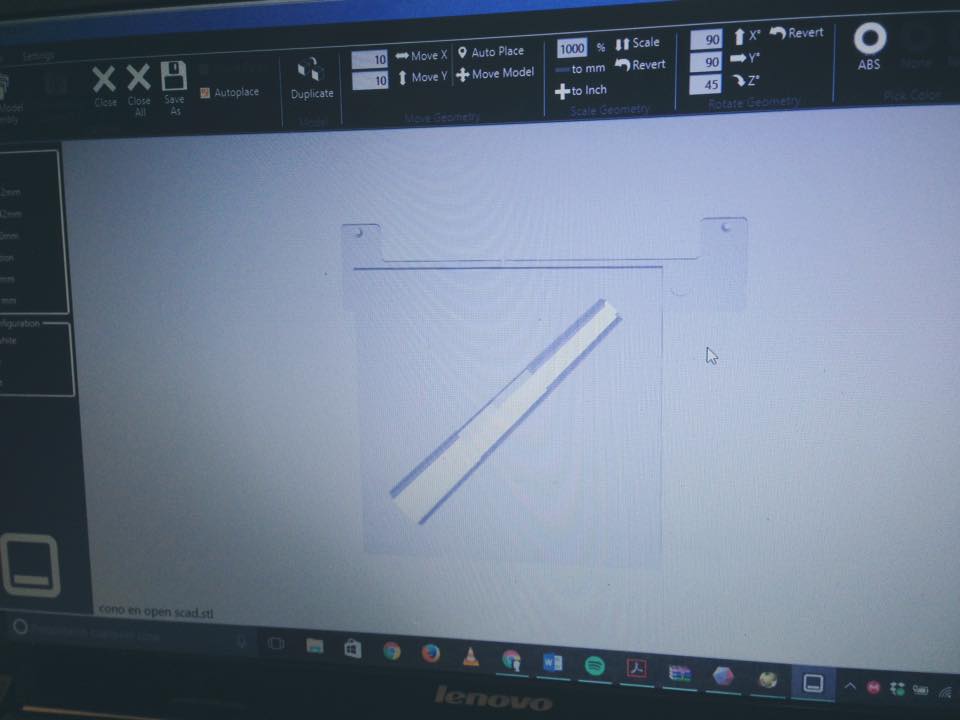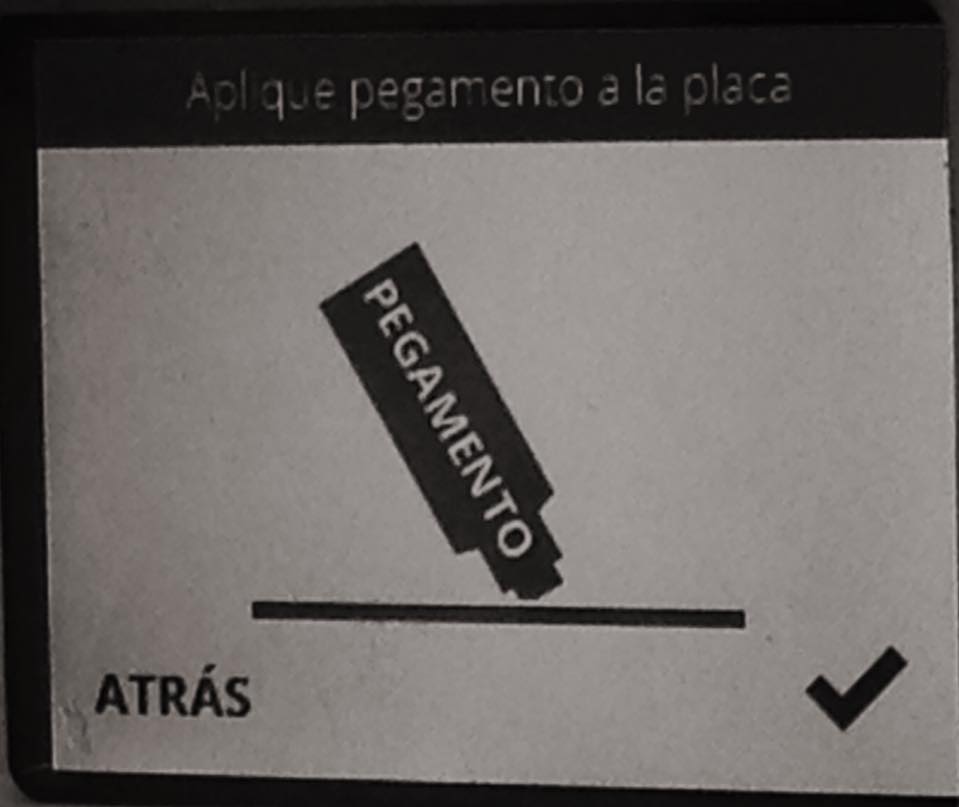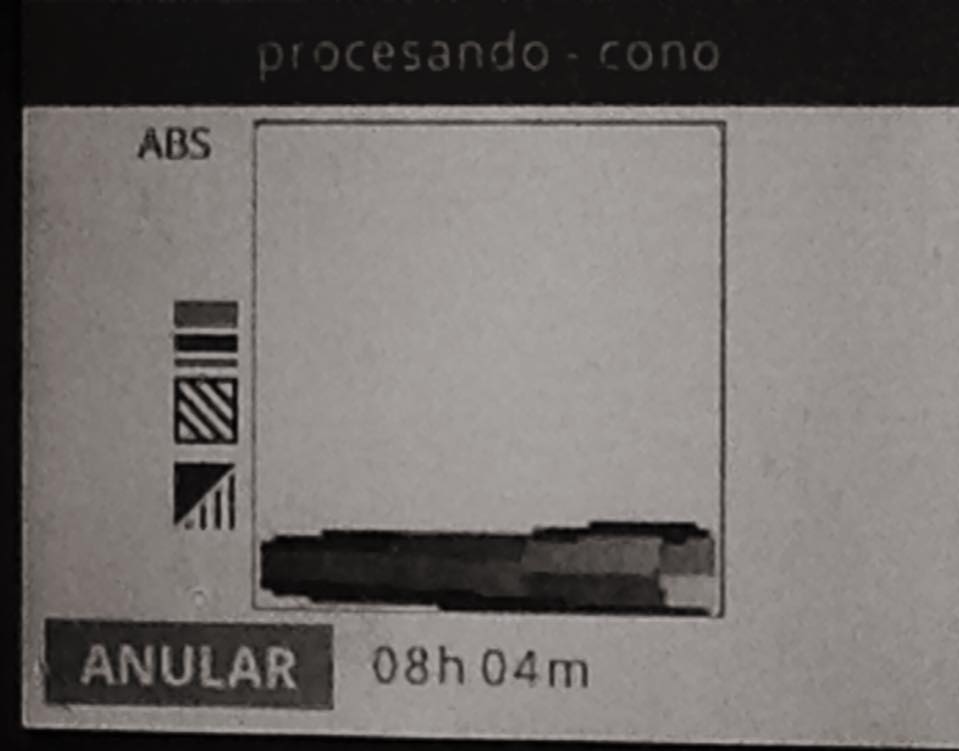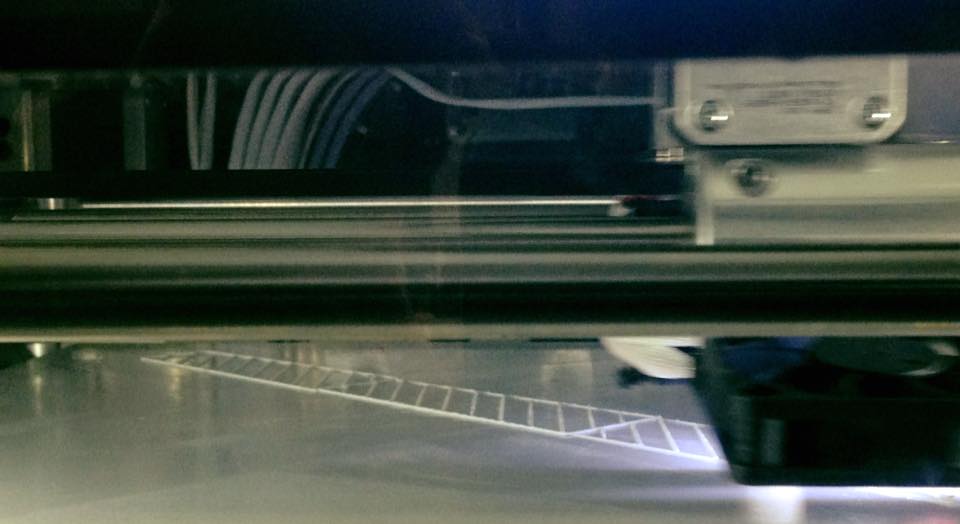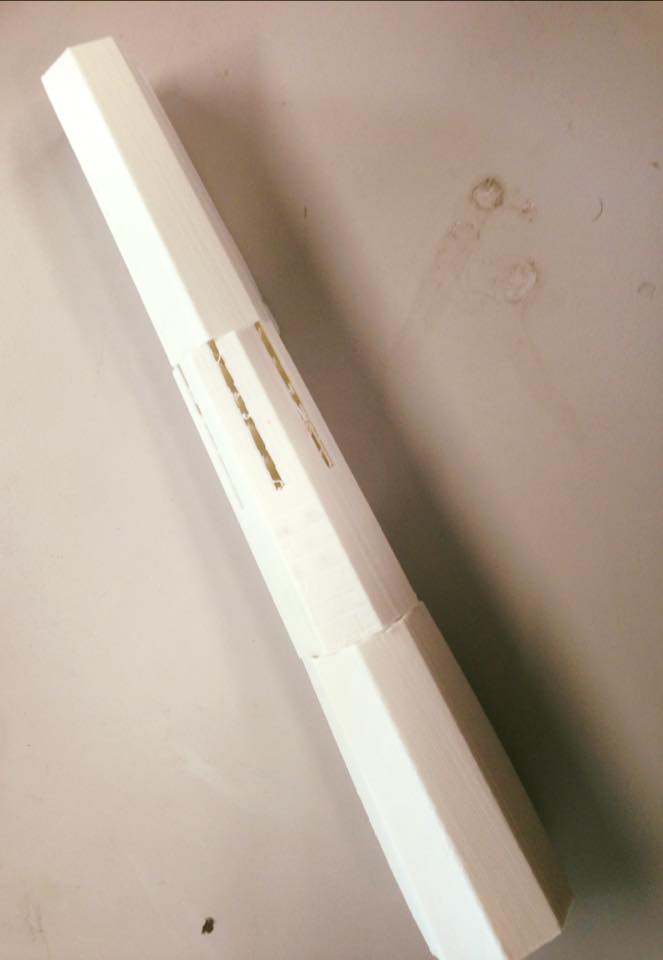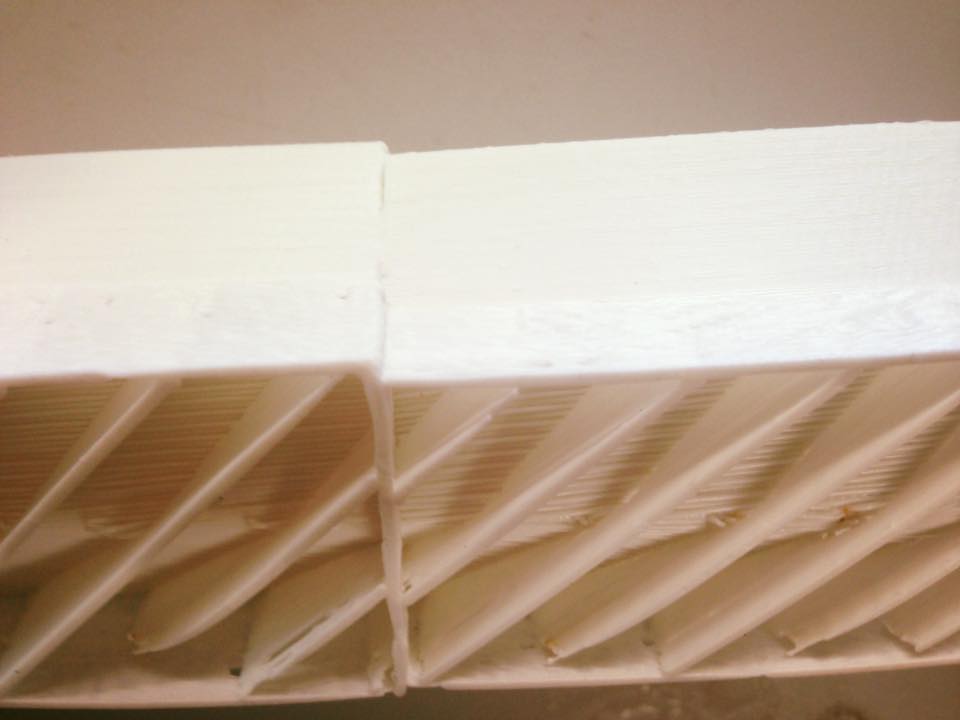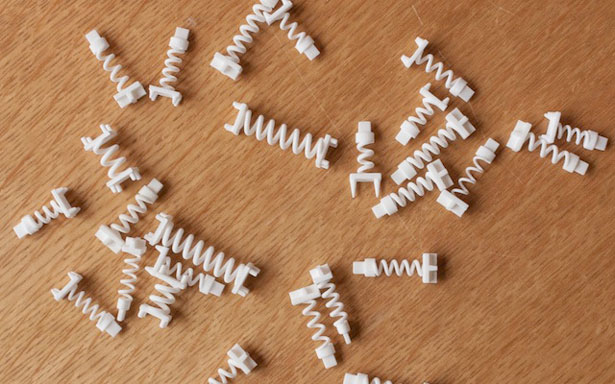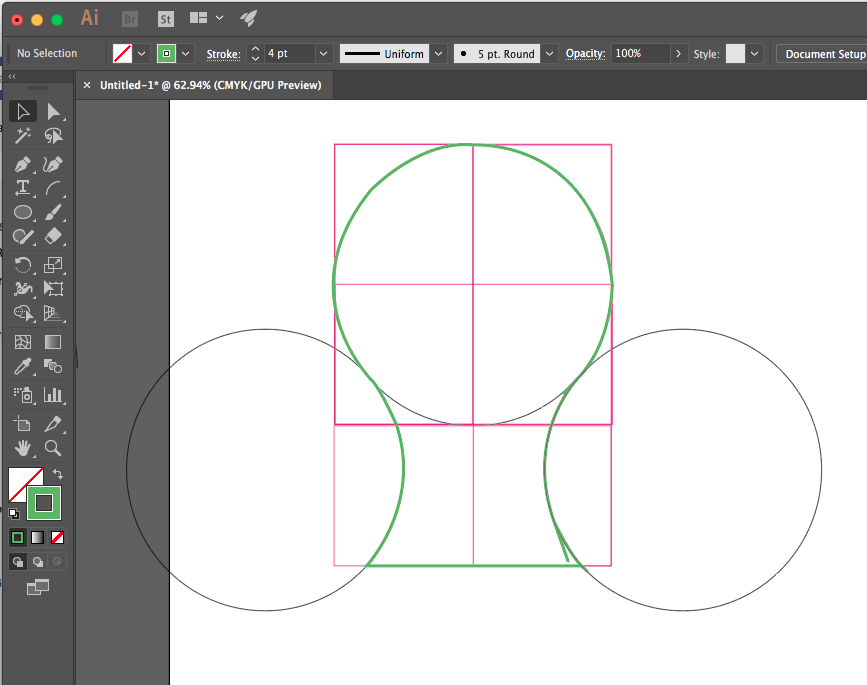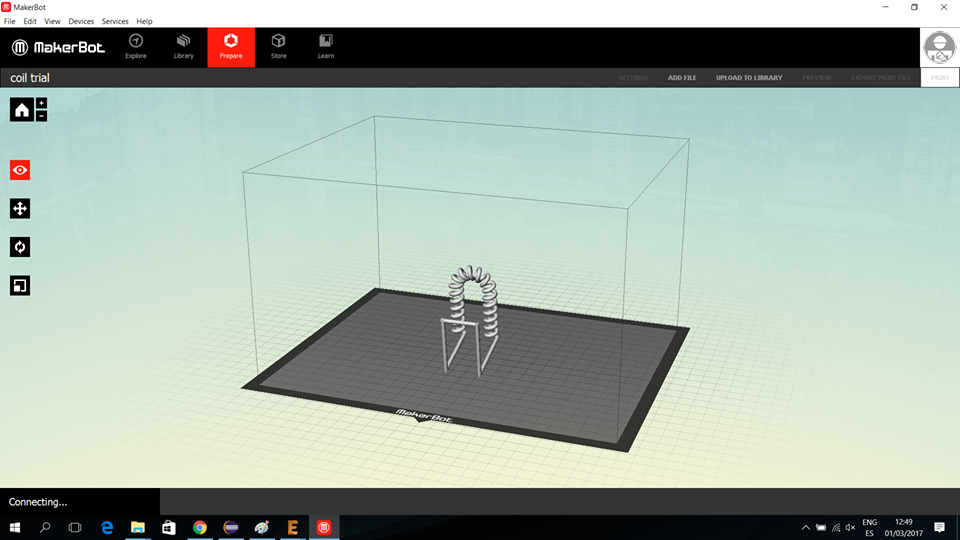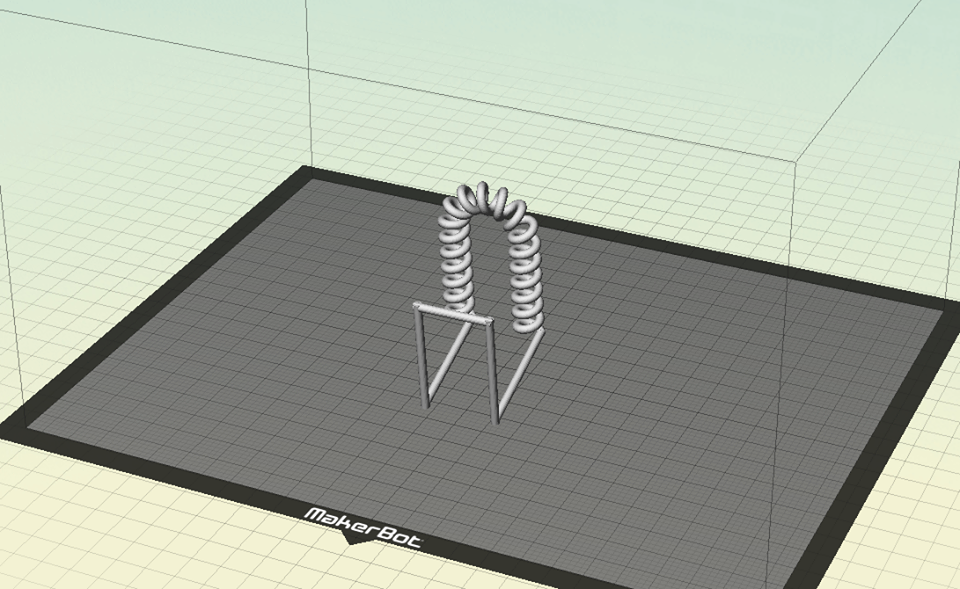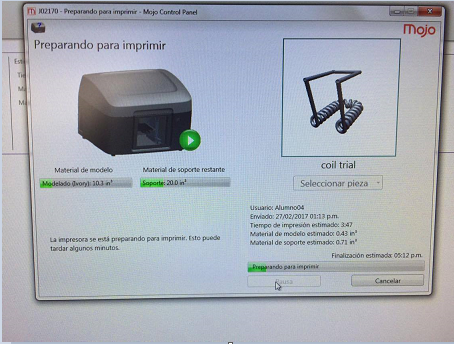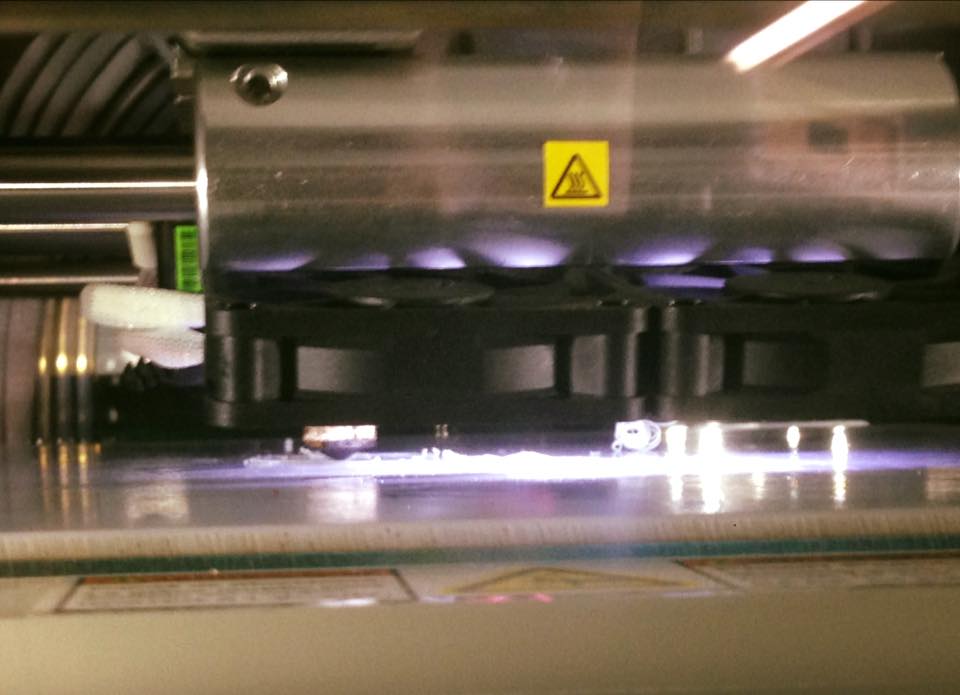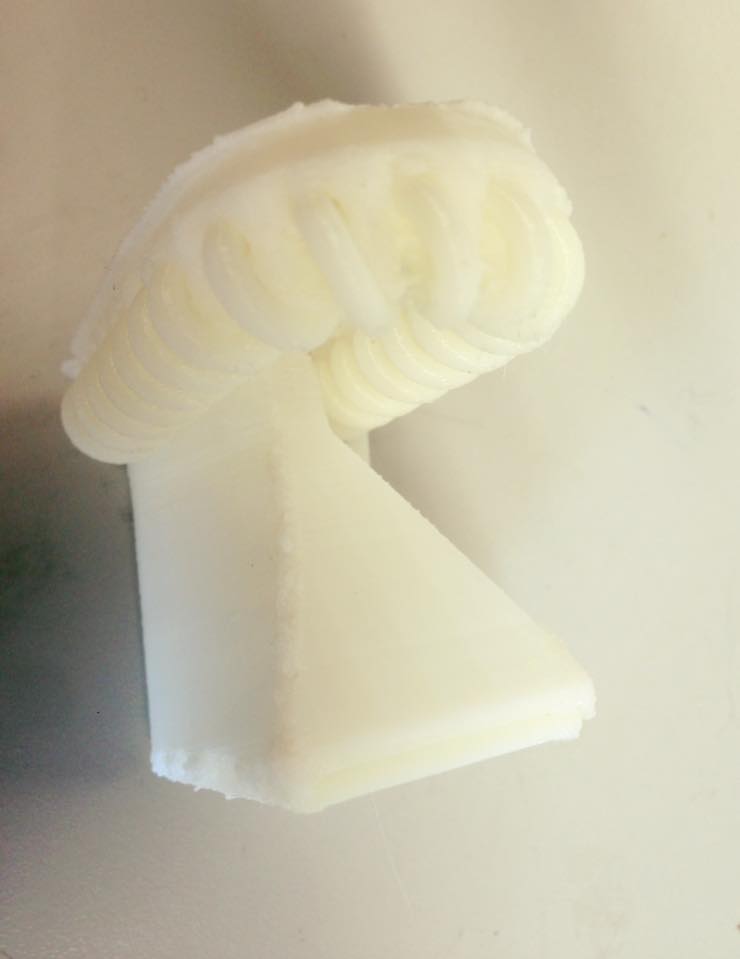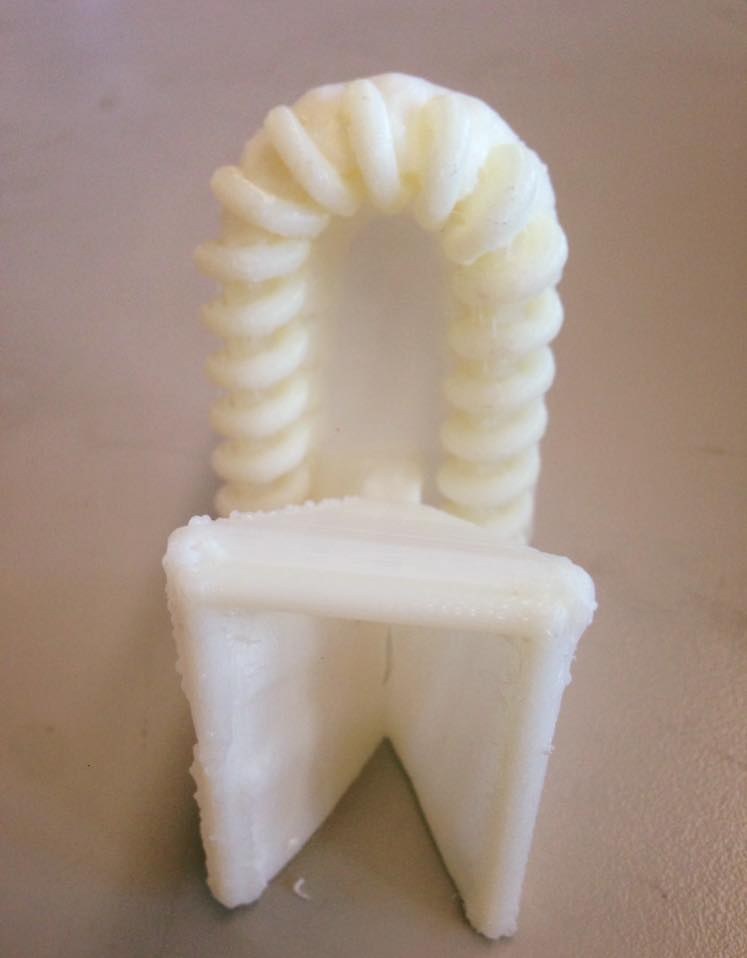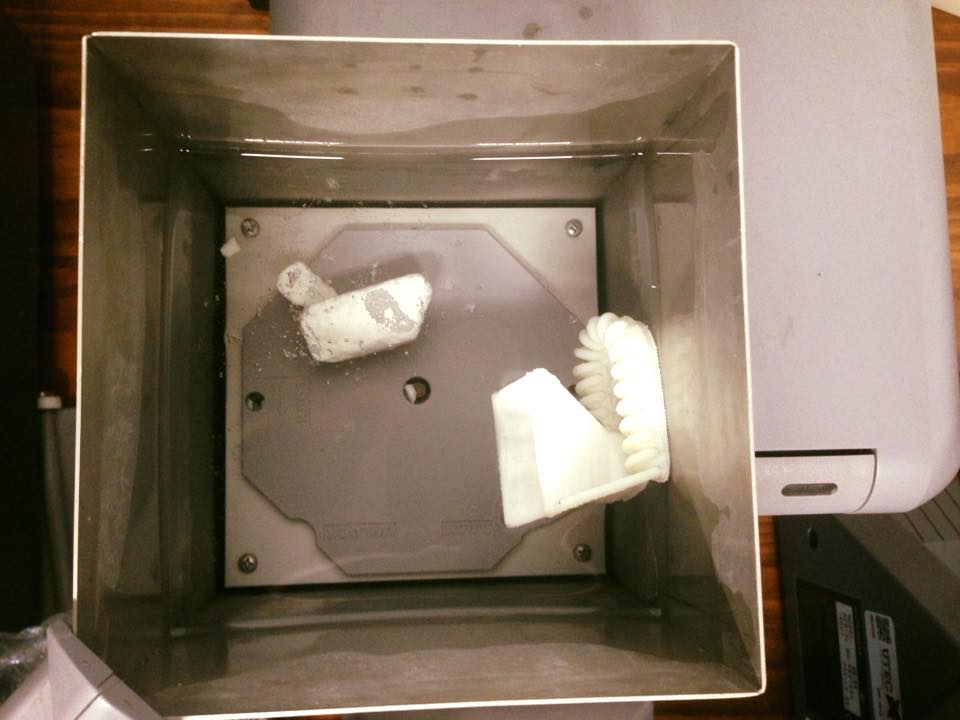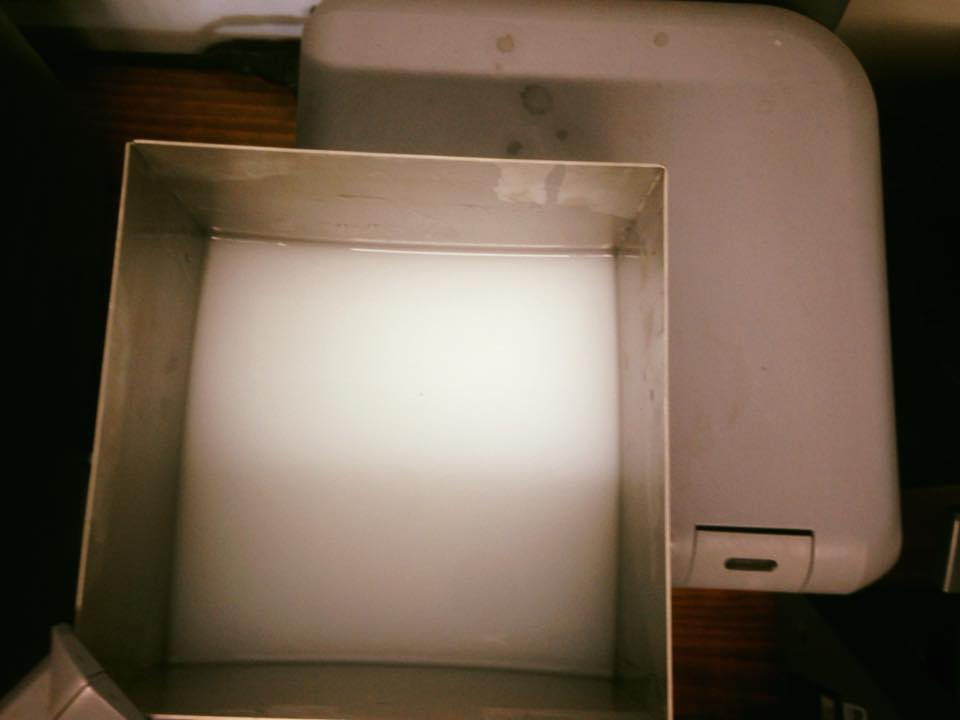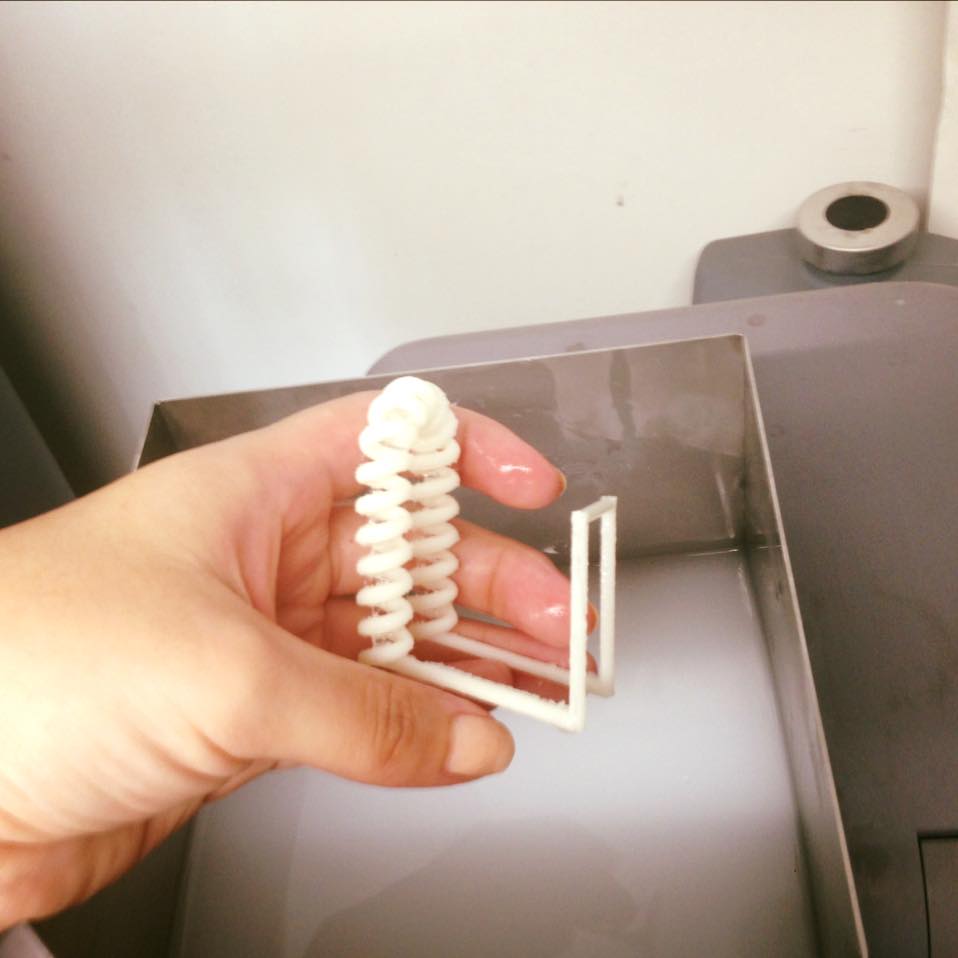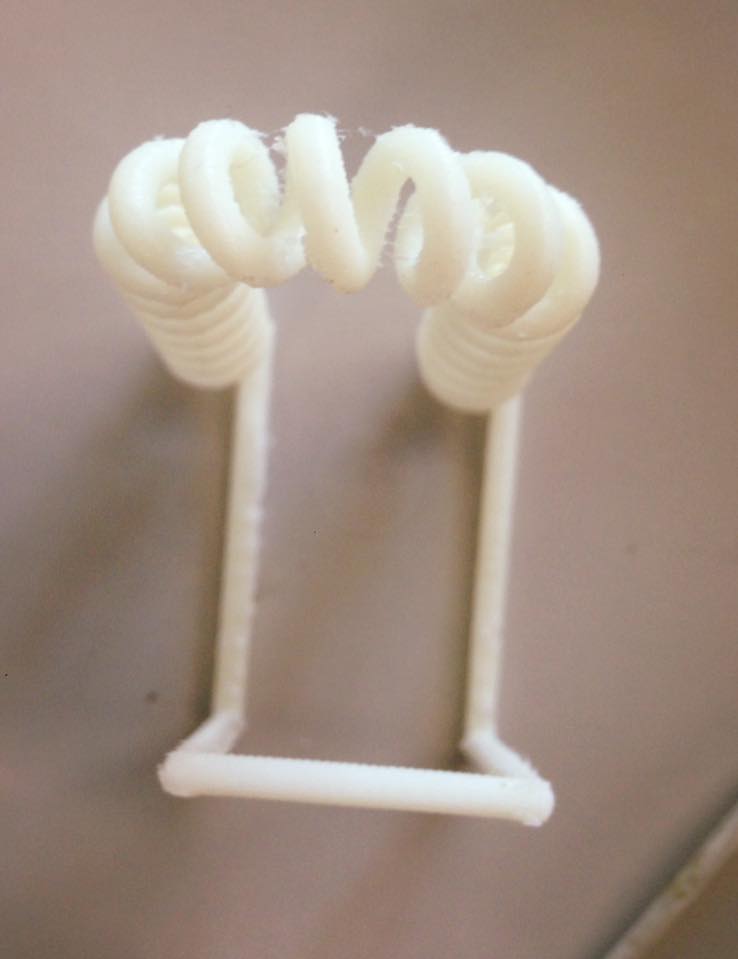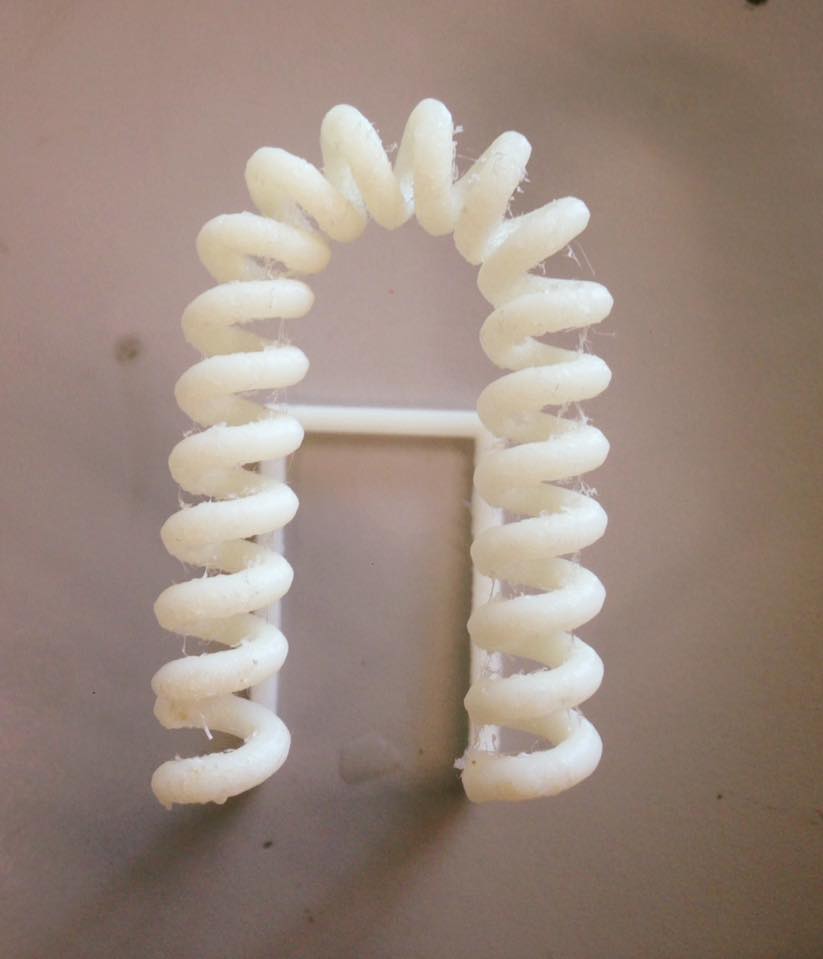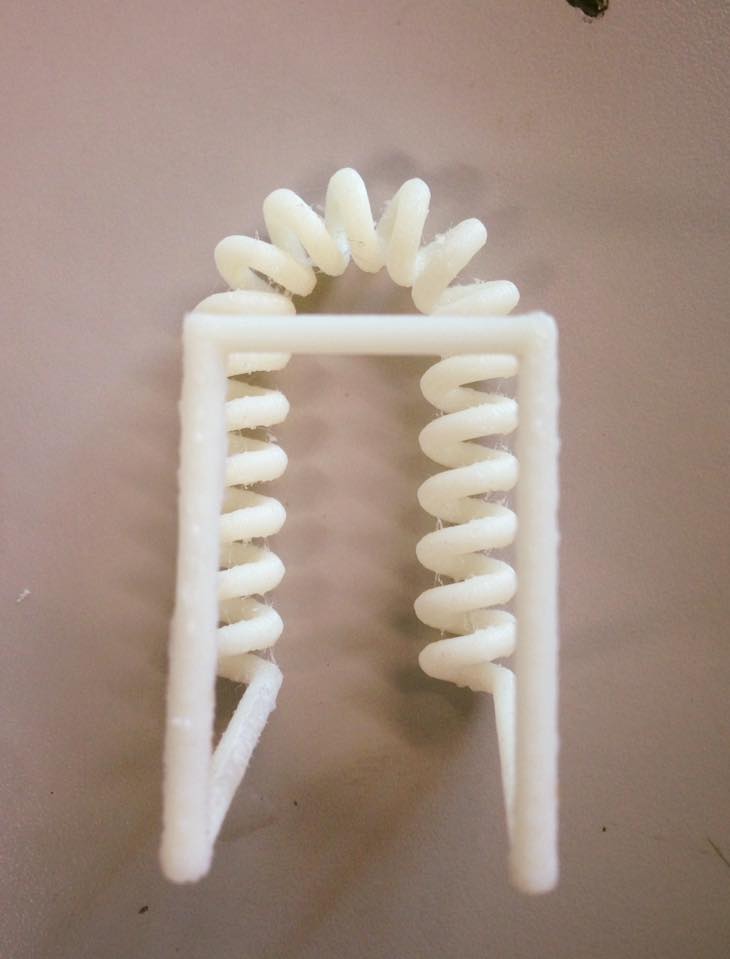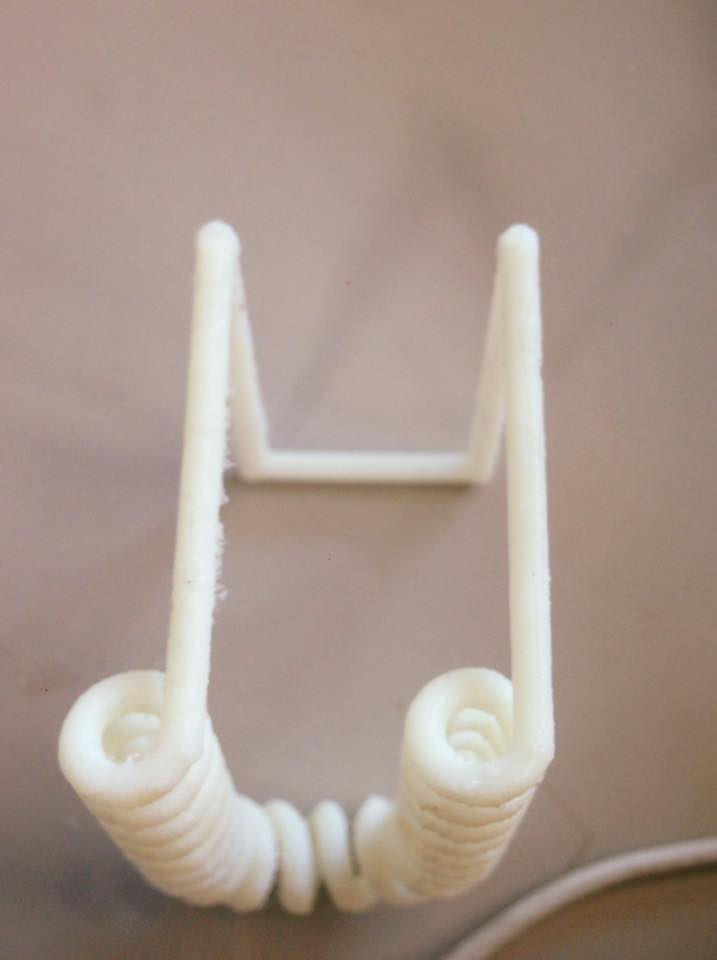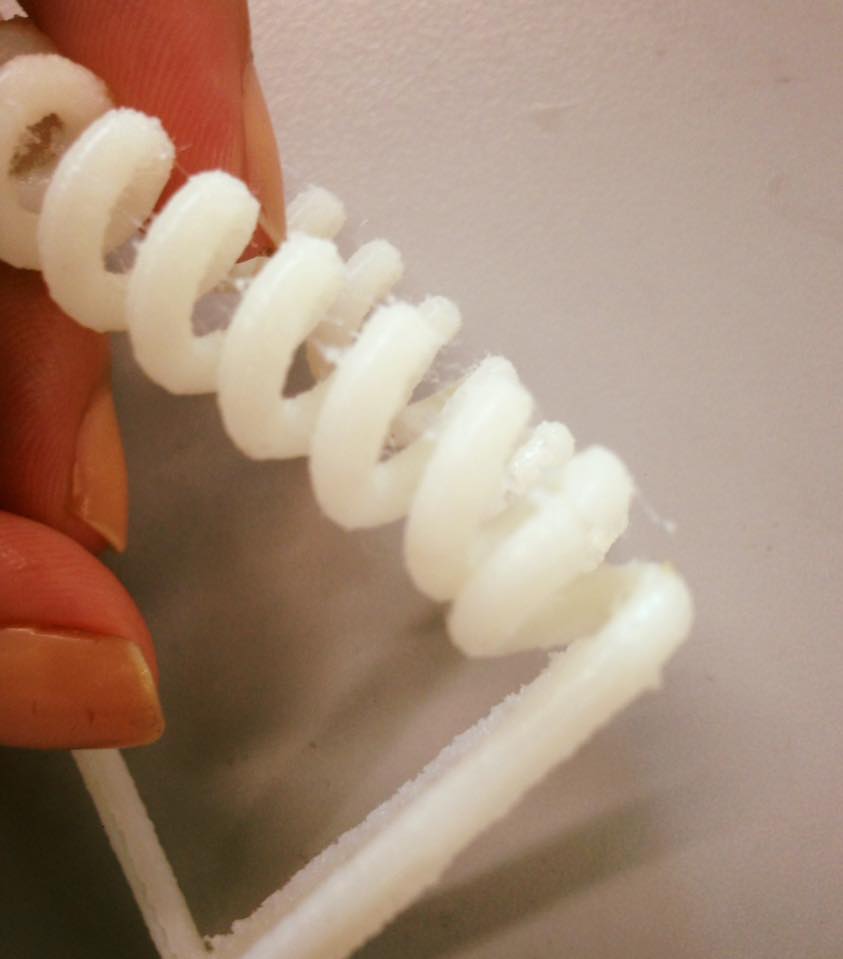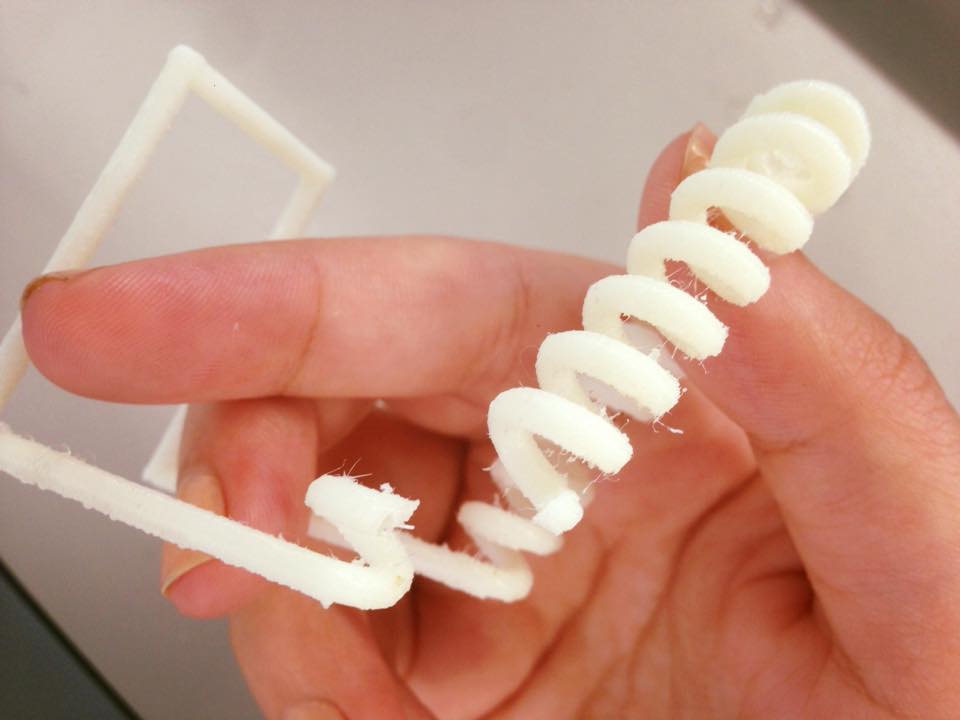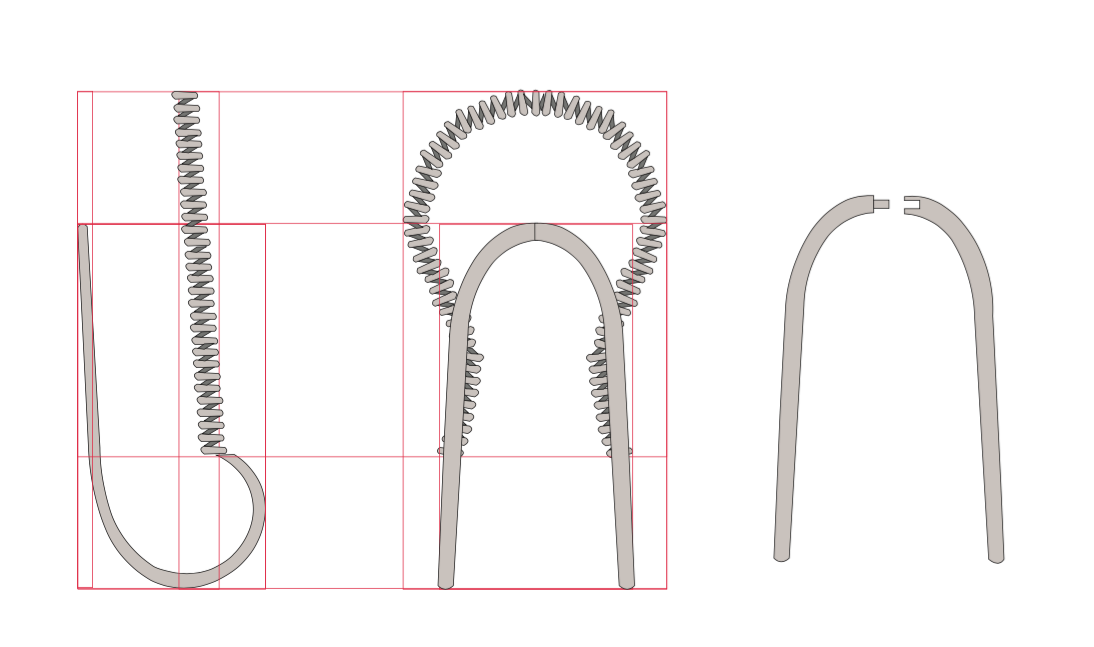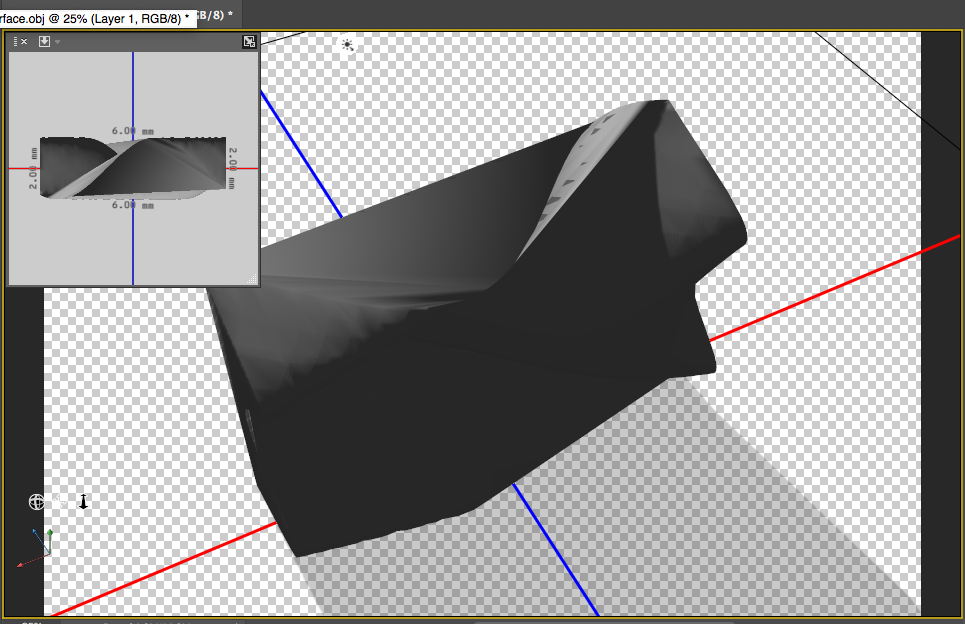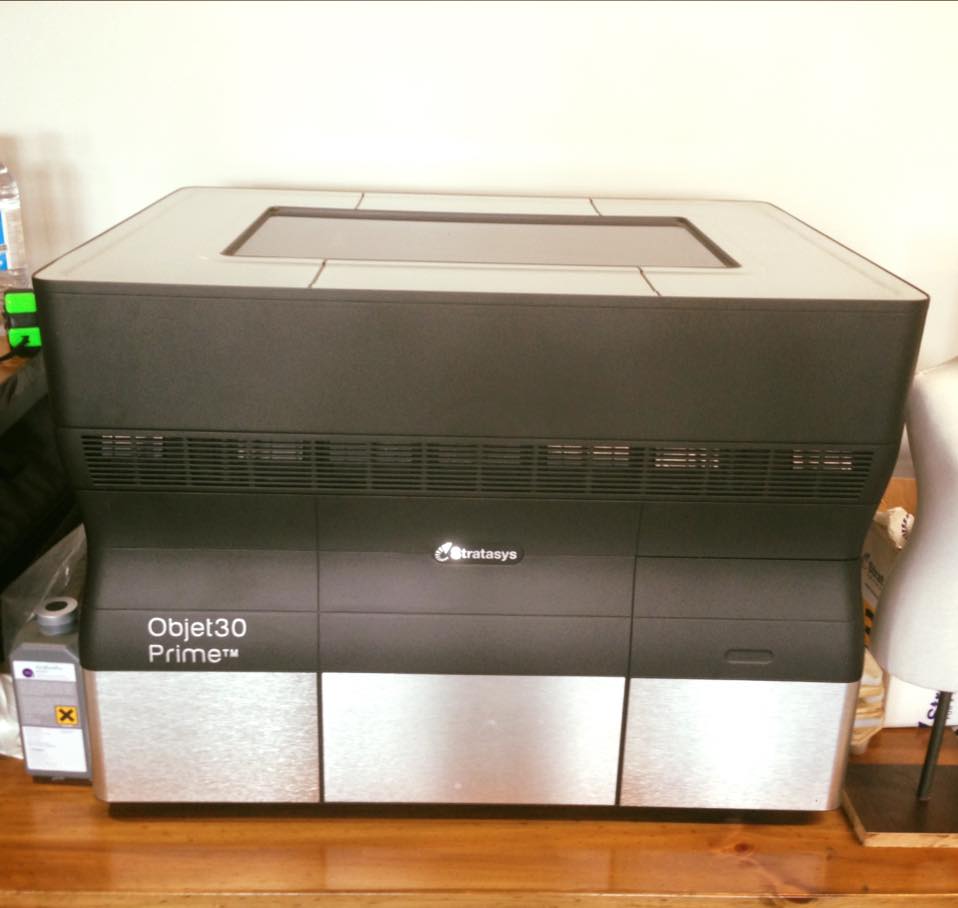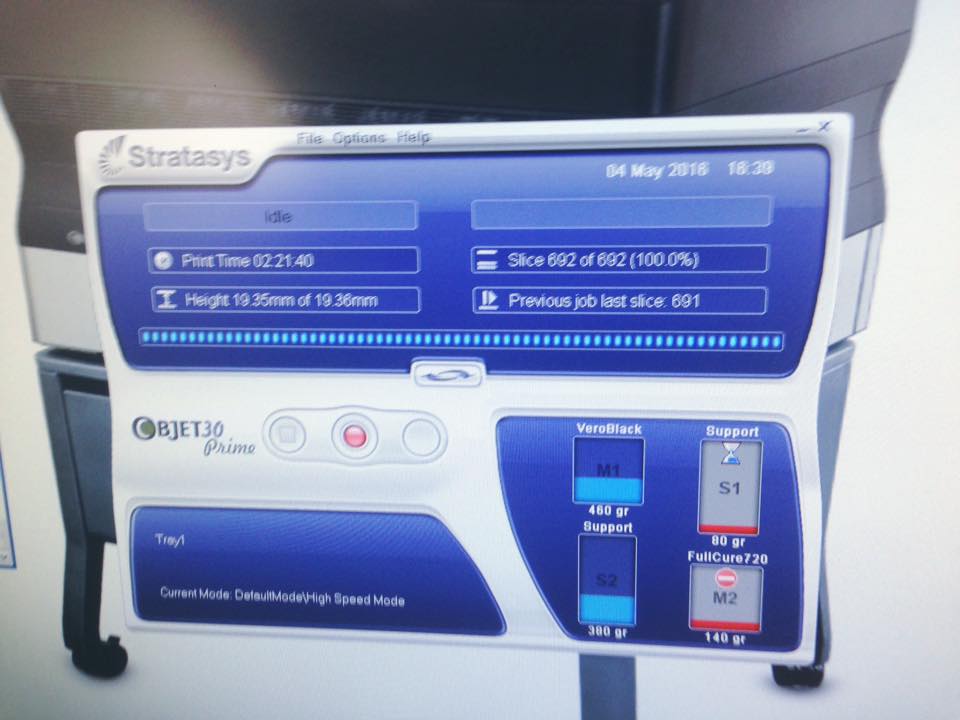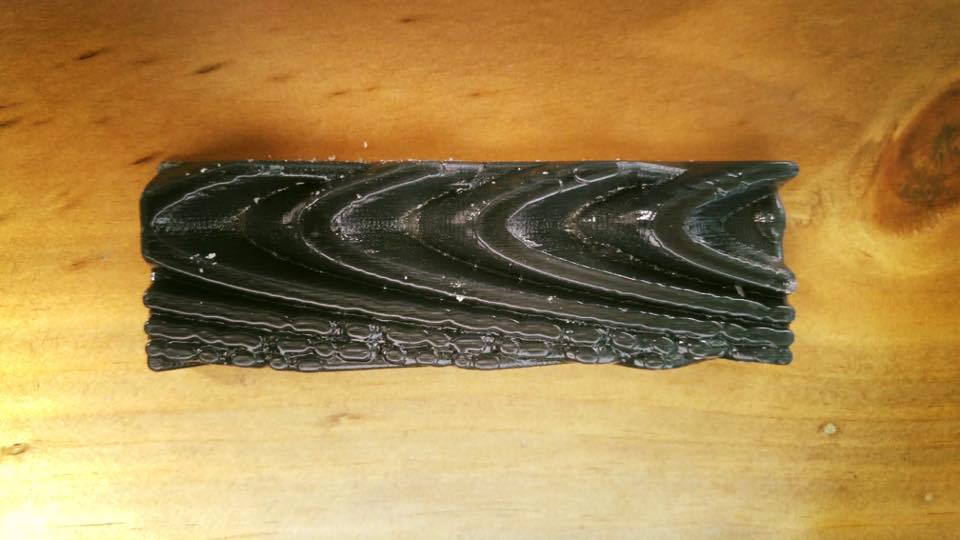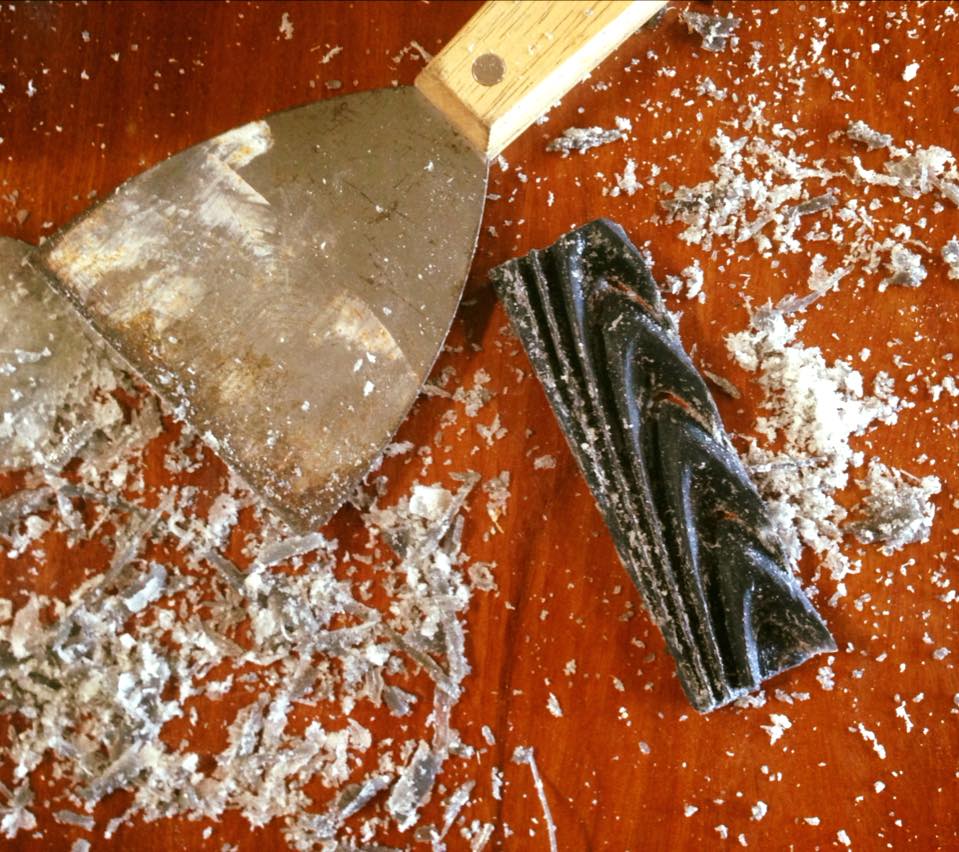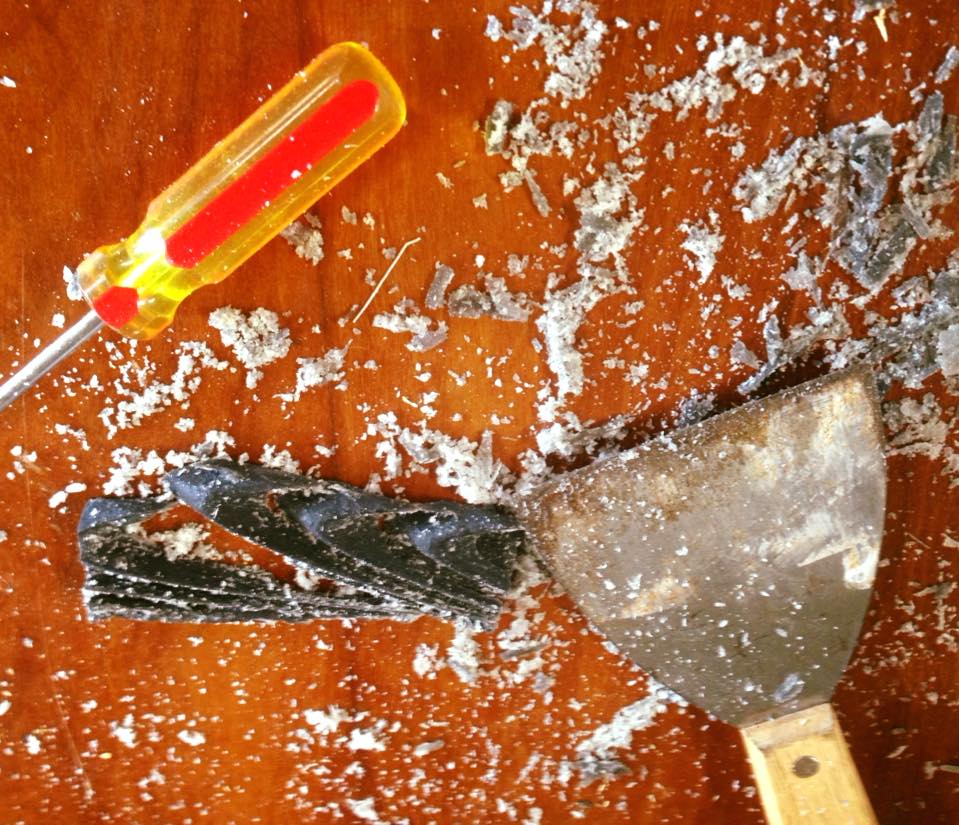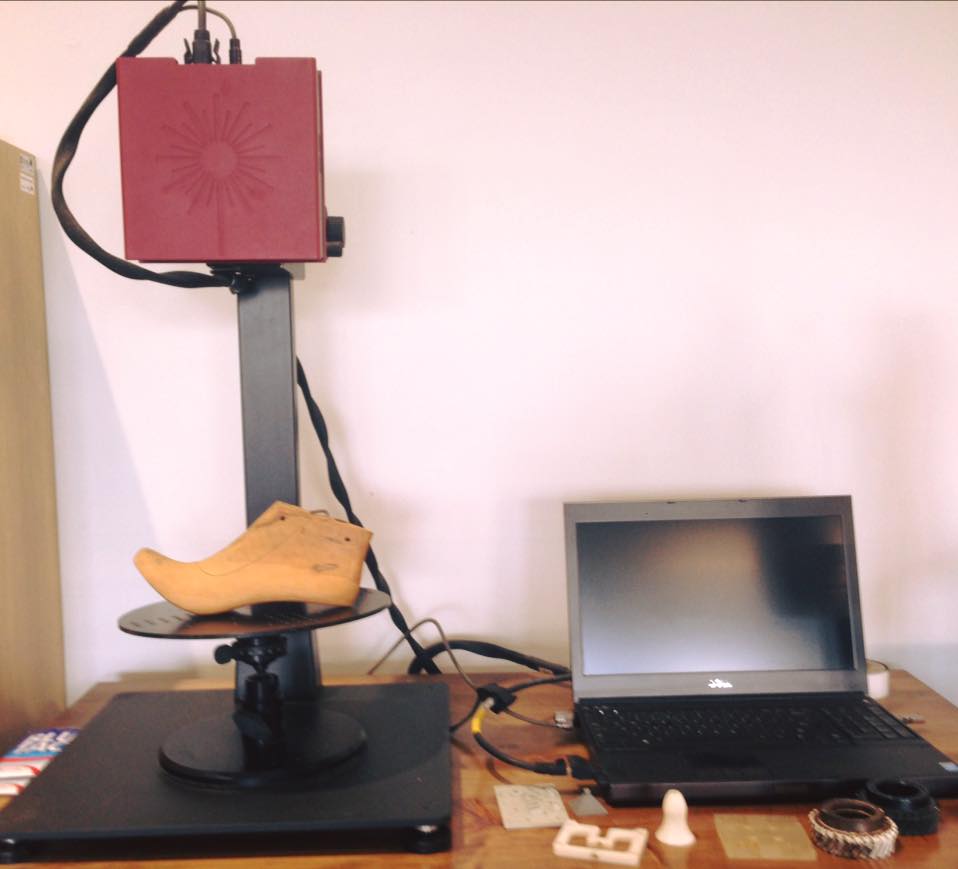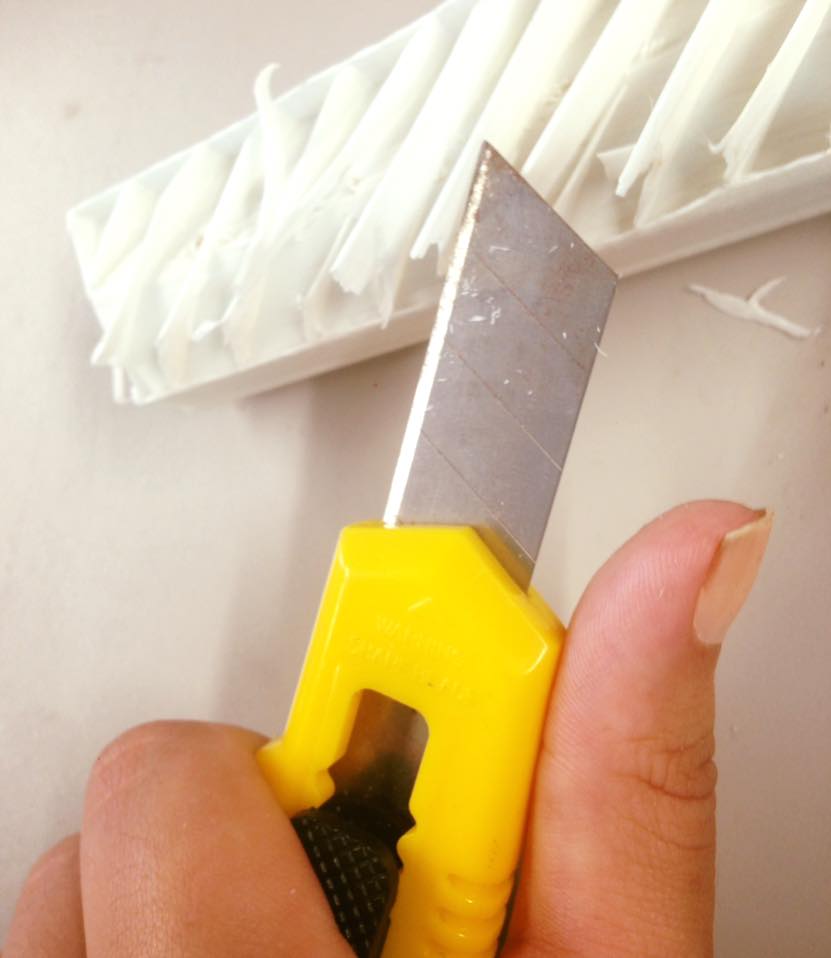
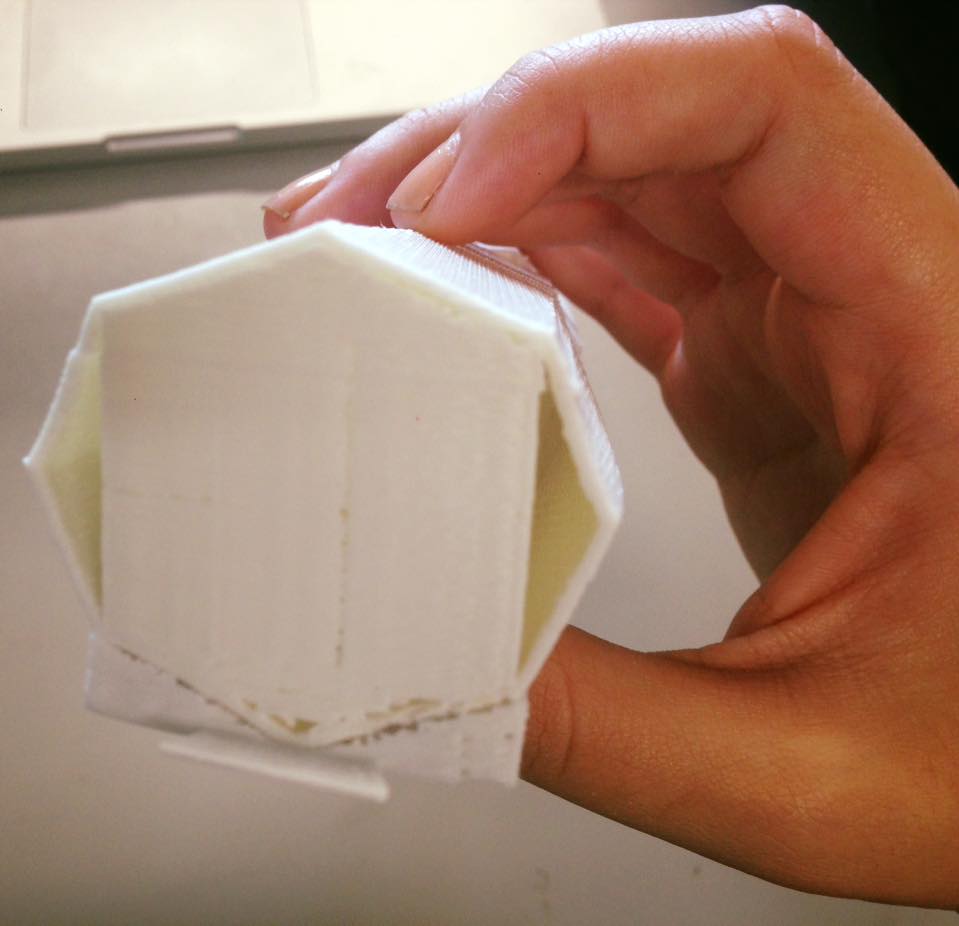
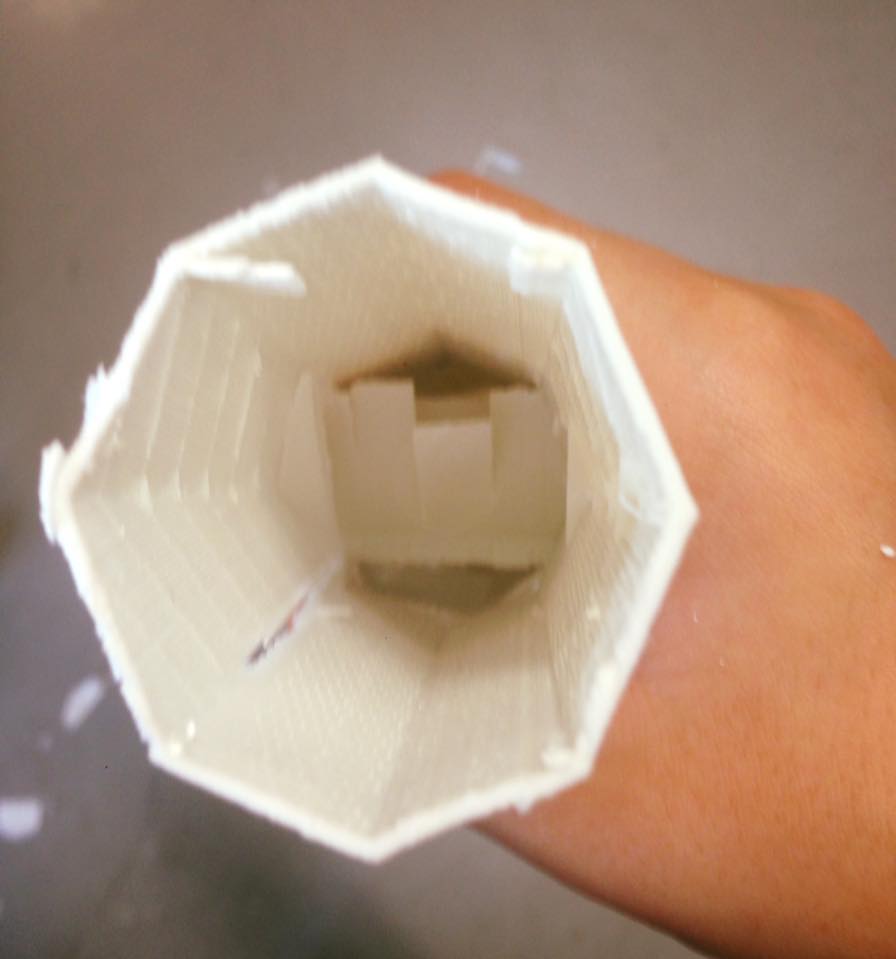
Results:
1. It was an Open Scad file, where the image is not as good as in other programs, so at the time of printing I found design problems that I couldn´t see on screen.
2. In my experience and seeing the work of the other students, the results on the CUBE PRO had more problems than with the other printers. In the parts where there are no support, the material doesn´t attach well.
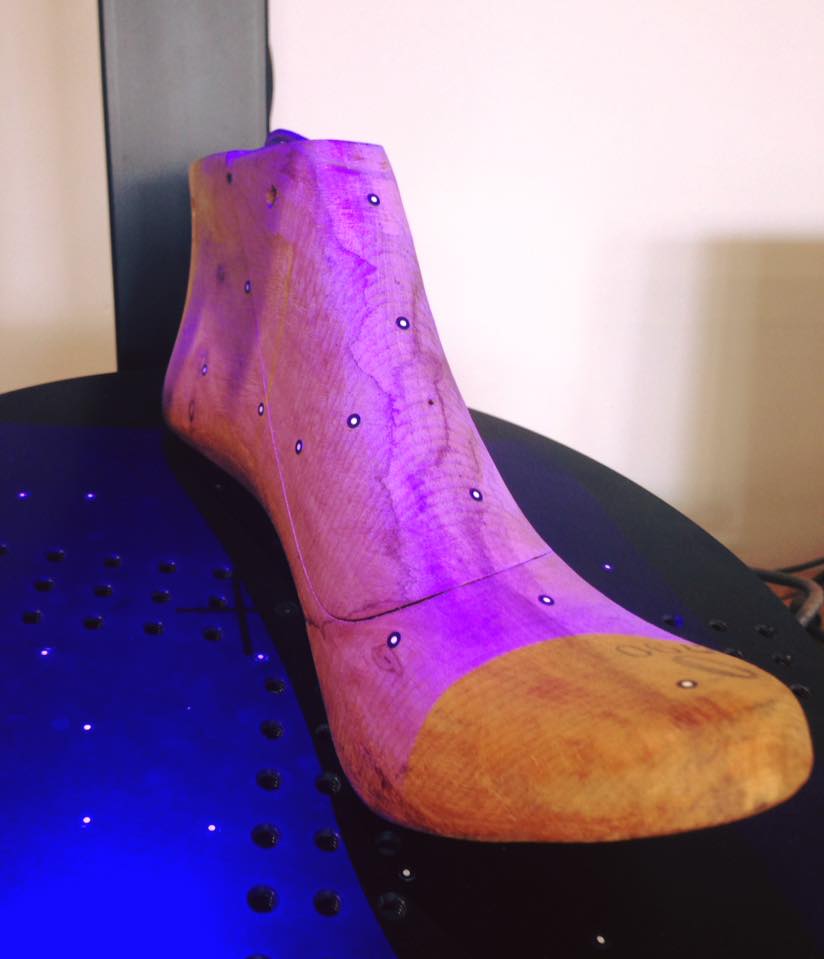
It Works on its own software, for the scanner to work, it needs reference points to read the volume, so black and white stickers must be put considering the form of the object.
At the beginning it didn´t read it. Then, it had too many over exposed areas.
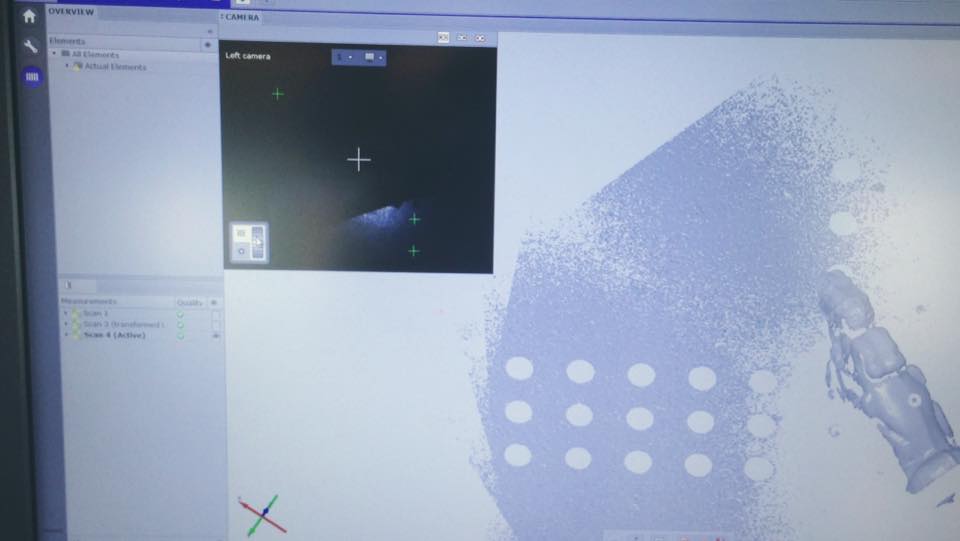
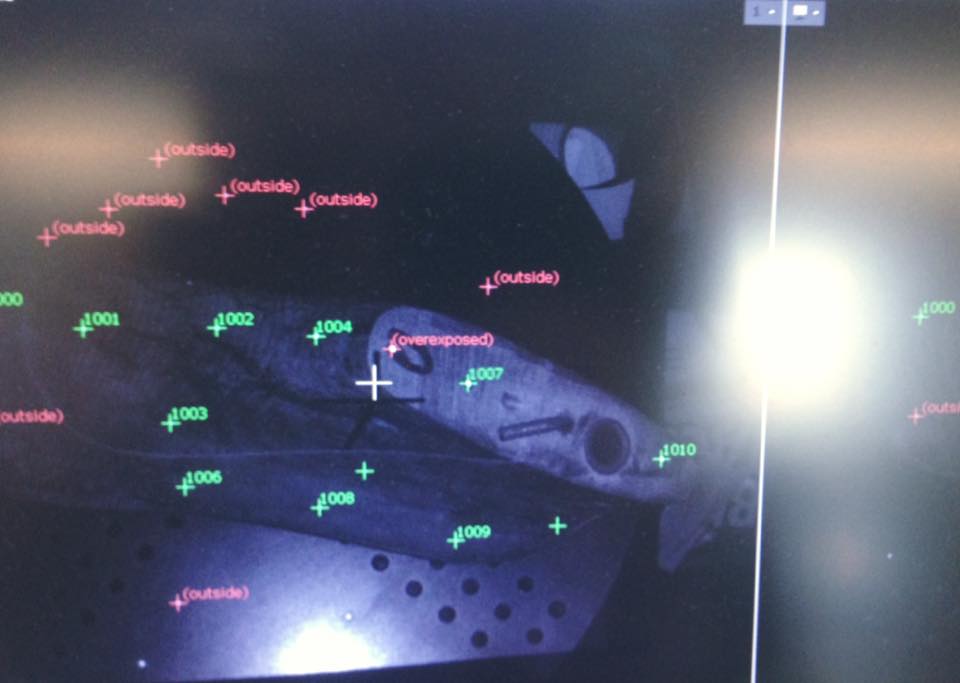
The Wood shoe last was too dark for the scanner, so i tried painting it in white.
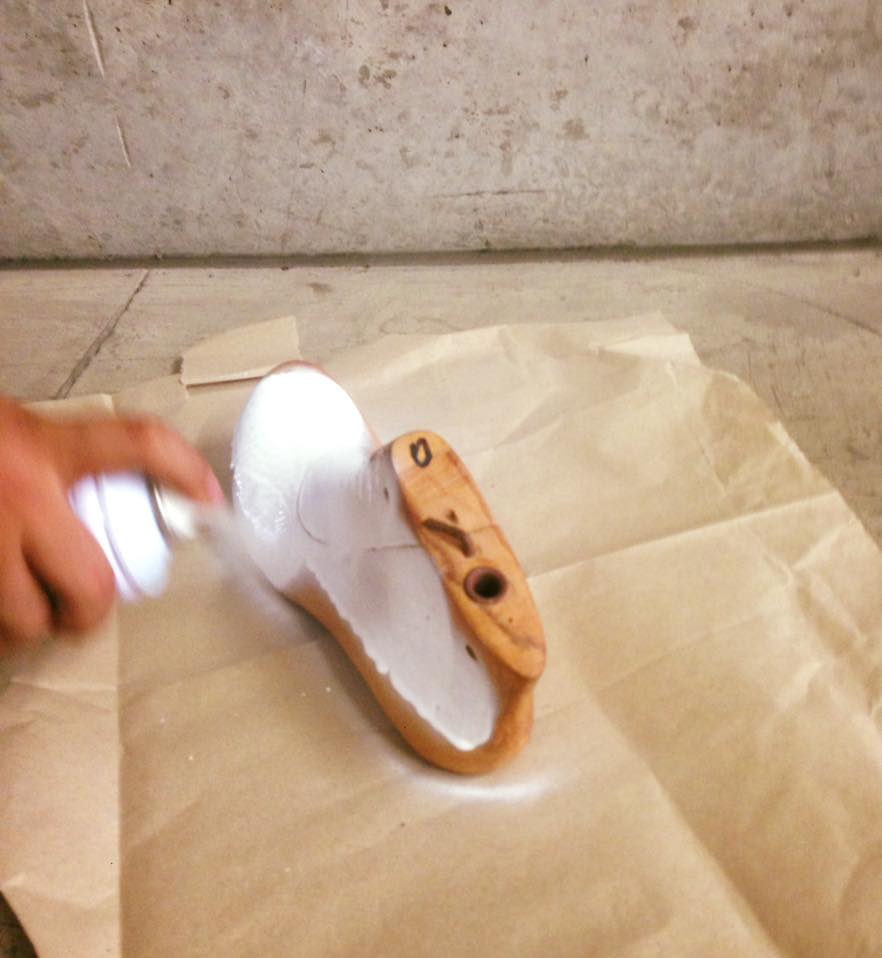
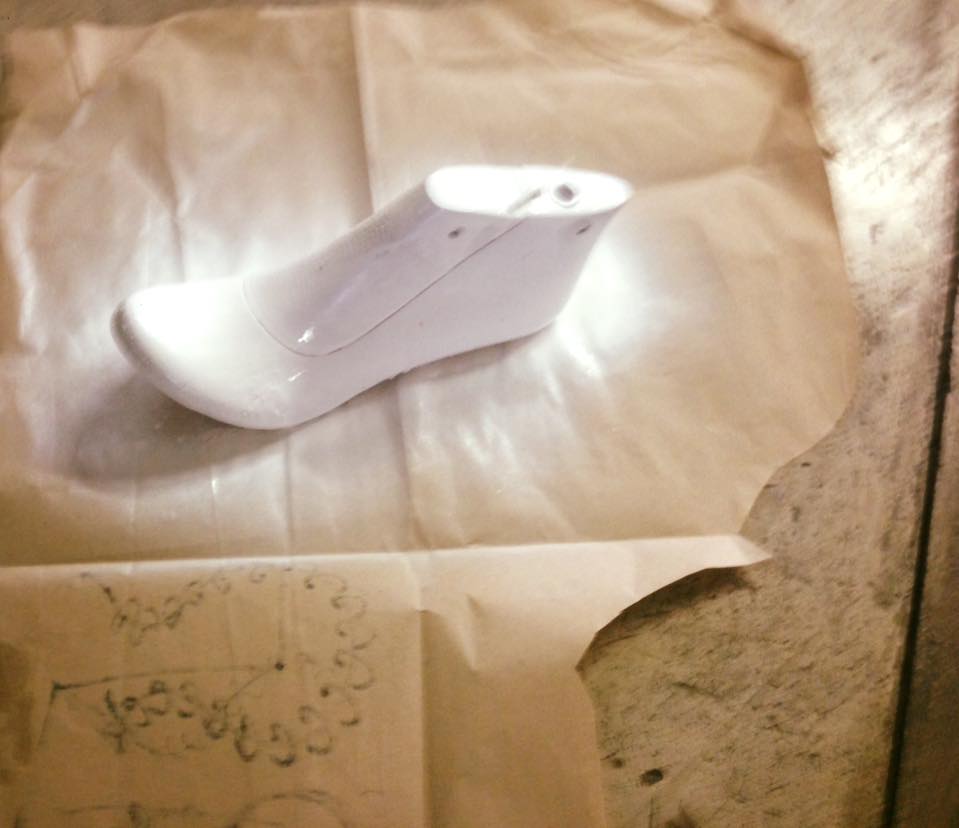
Then the printer starts building the structure to hold the piece.

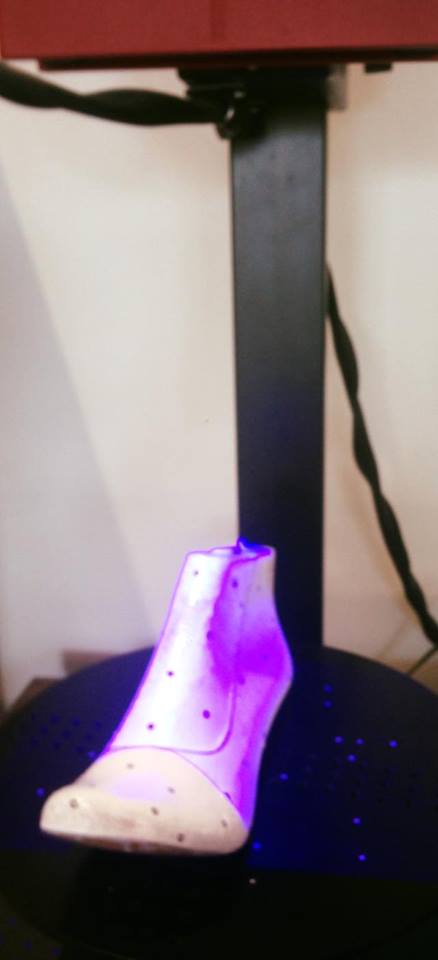
With the piece painted it was much easier for the scanner to recognize it.
If someone is going to Paint something to scan later, I recommend mate Paint.
The shine of the light on the piece creates overexposed áreas that can be avoided
With mate Paint.
The scanner Works with its own software, GOM SCAN.
It works by detecting the reference points (black and white Little circle stickers)
and the distance between them.
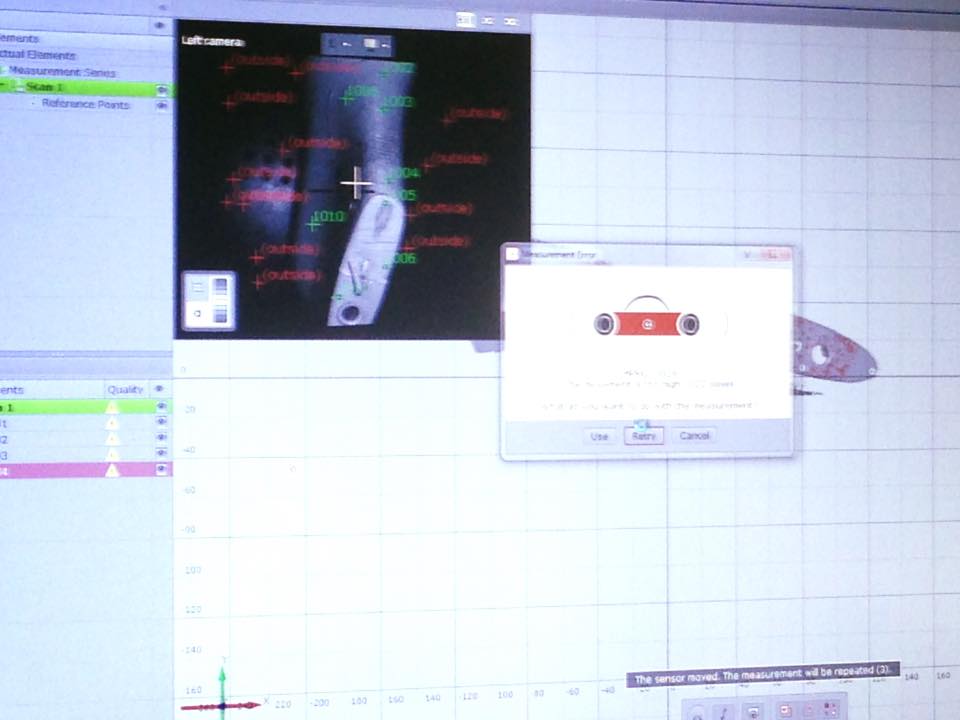
A funny thing was that because the 3D printer was working next to the scanner, it created vibration that messed up the work of the scanner.
The sole wasn´t painted so the scanner had problems with it.
After painting it, a new sequence of pictures had to be made.
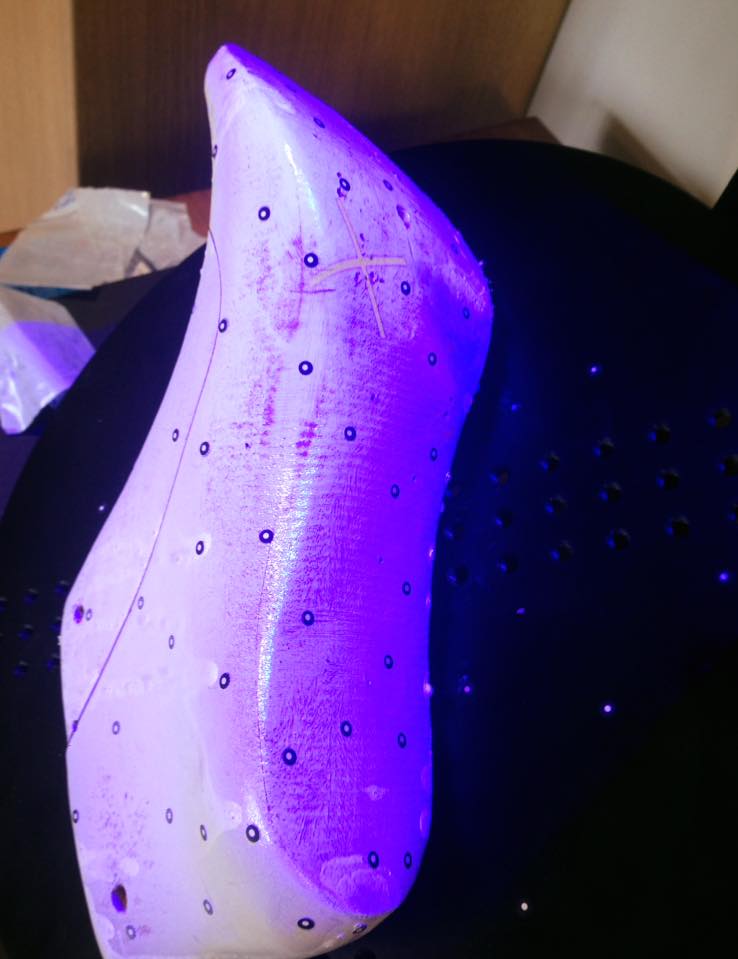
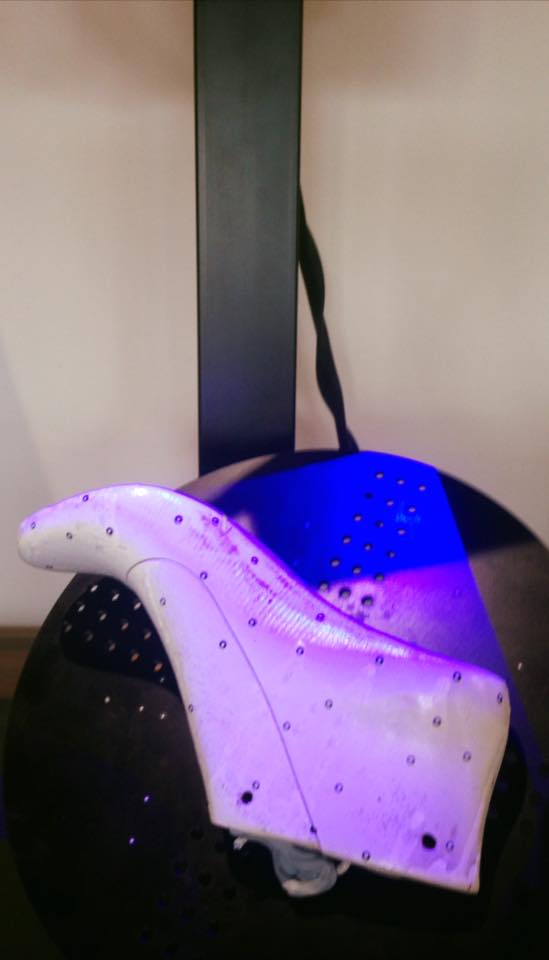
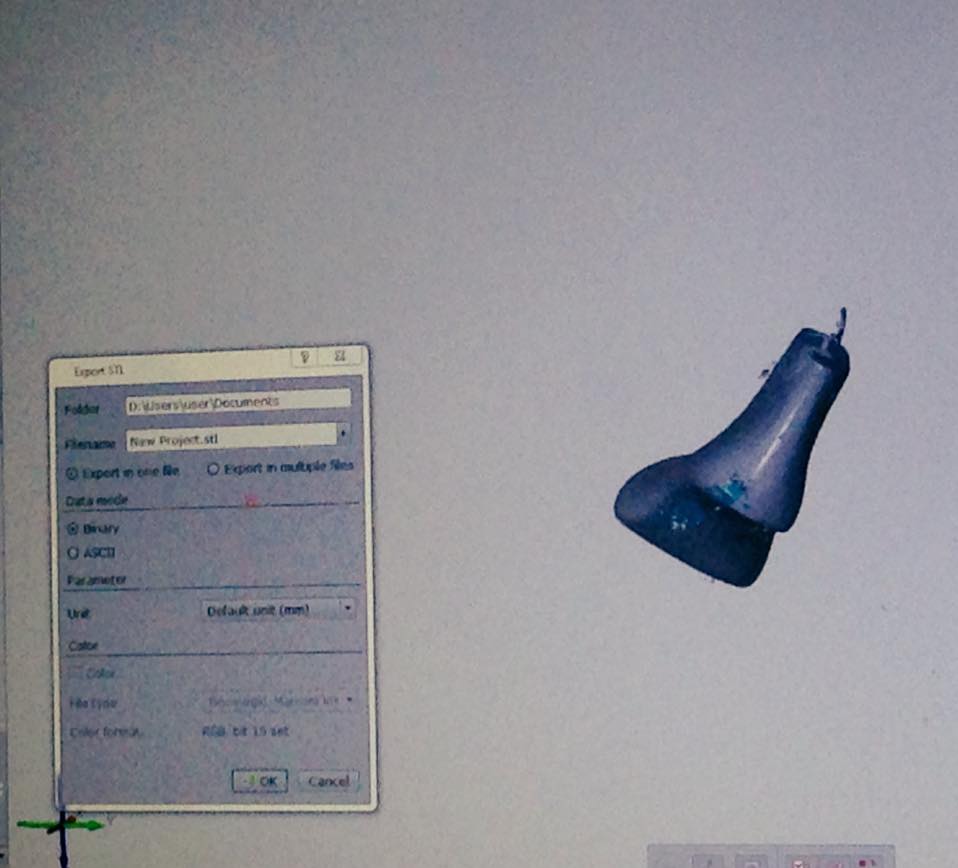
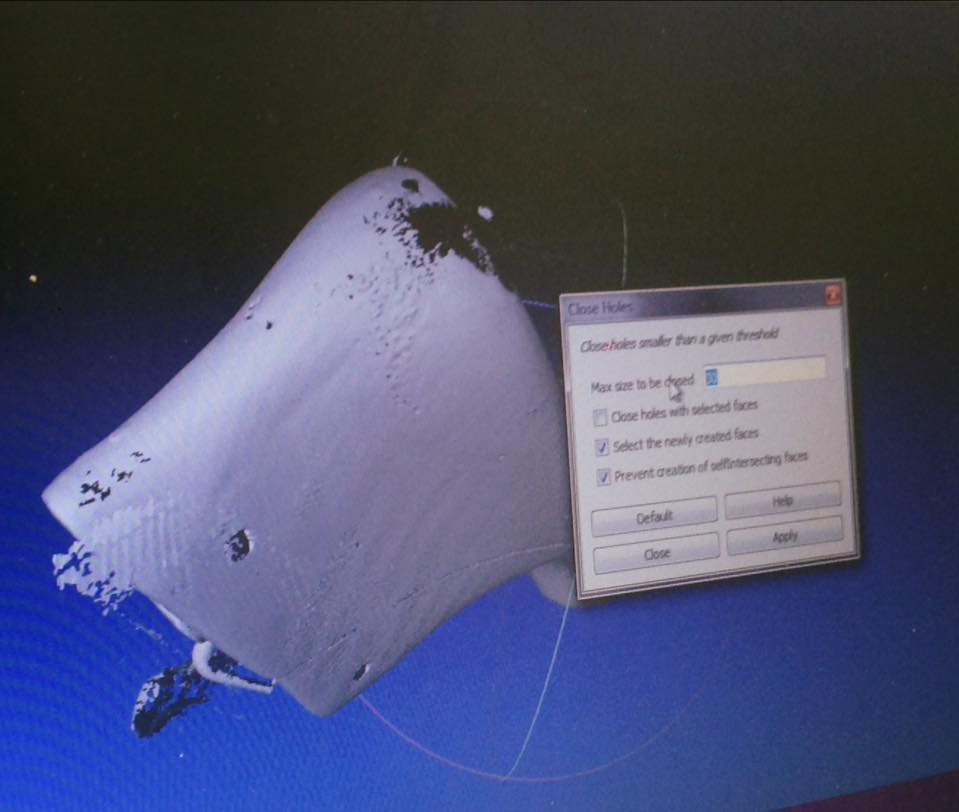
The gray areas are the ones that the ones the scanner is sure about, the red ones, where the scanner is not so sure and the teal is the back or empty parts. The brightest Green are the points of reference.
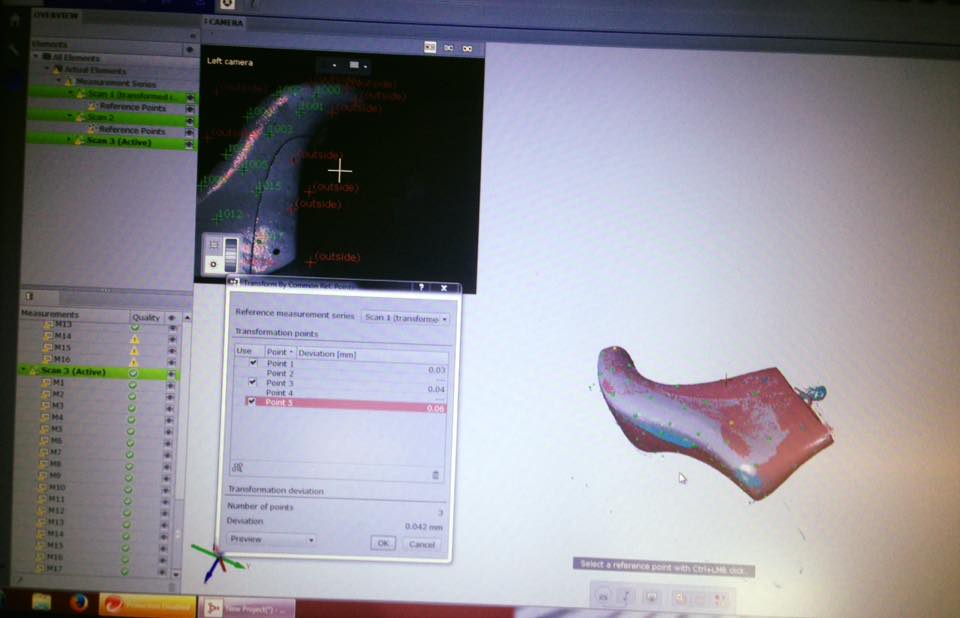

To complete the shoe last three series of pictures to fuse them after.
To do so, you have to detect a few reference points that appear in both views, so the software can know the position the piece must be put in.
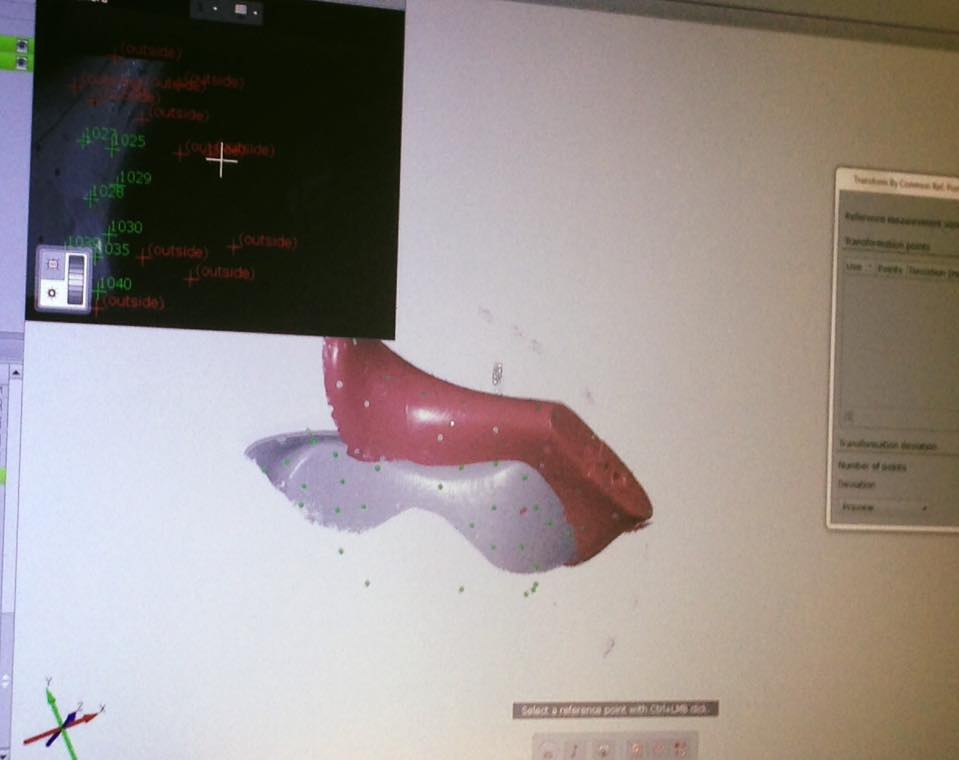
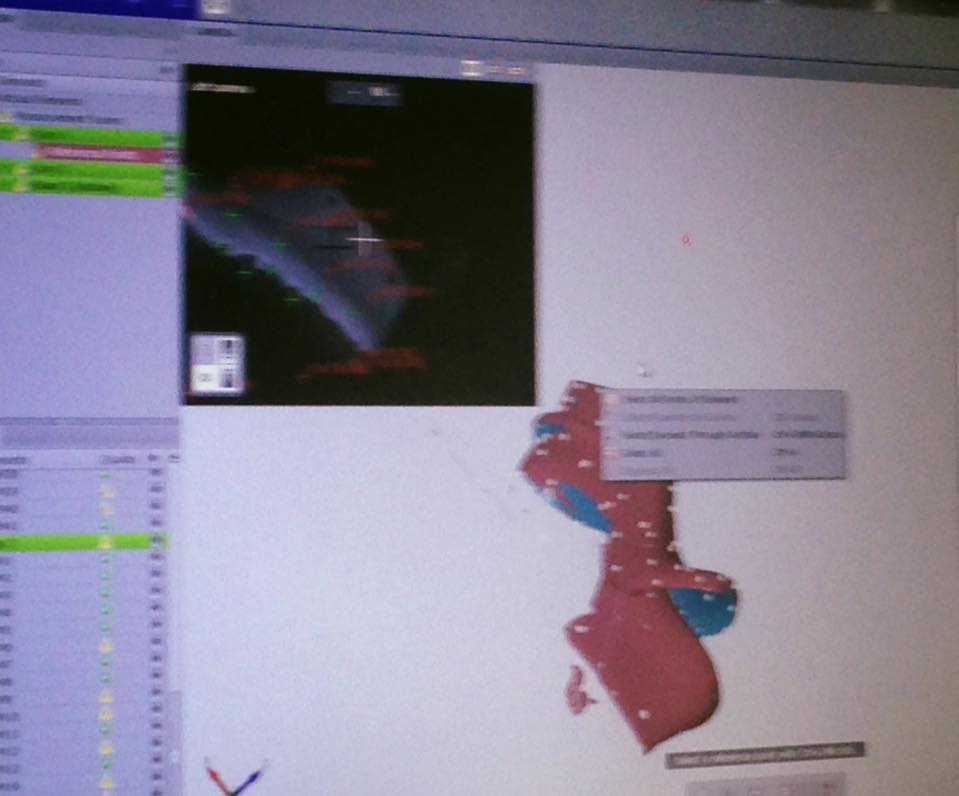
The result :
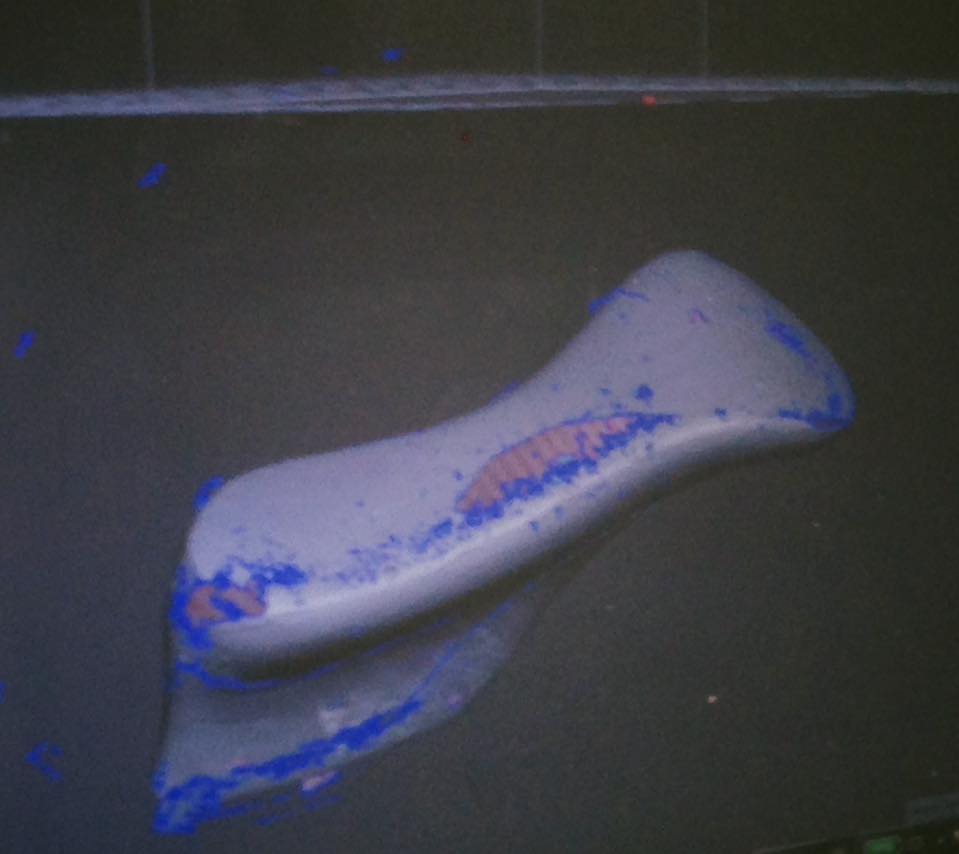
Almost all the shoe last was scanned. Just a couple holes at the sole and the low part of the ankle.
Then, I went to Mesh Lab, to reduce the quantity of polygons to 250 000.
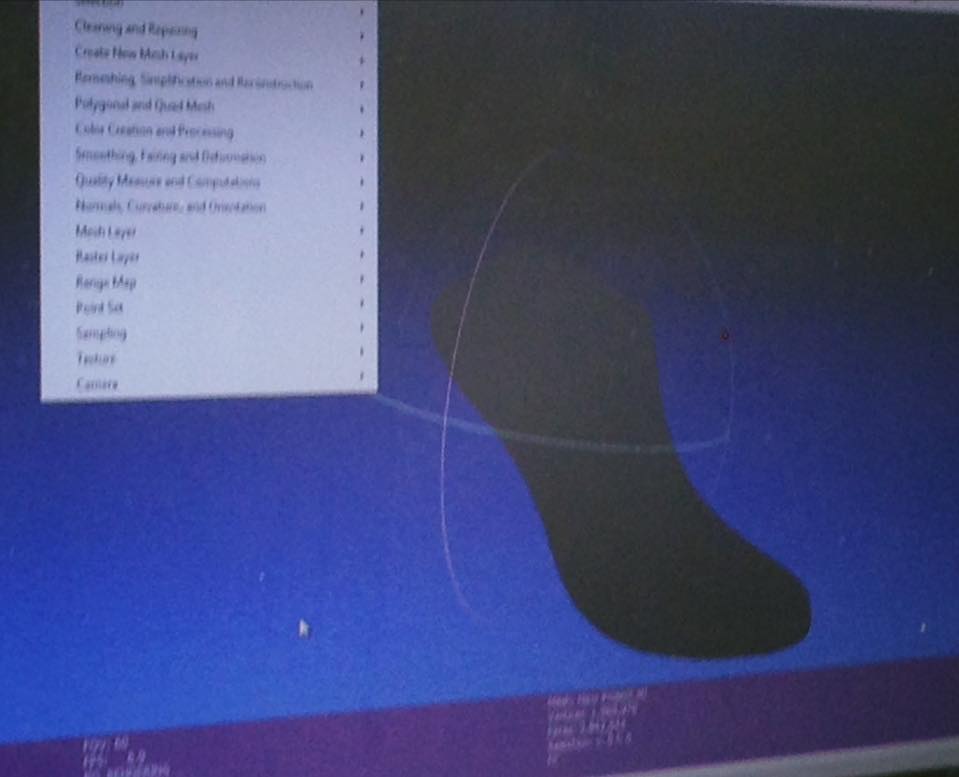
Next step, Mesh Mixer to repair and delete extra information.
And once again to Mesh Lab to fill the holes.
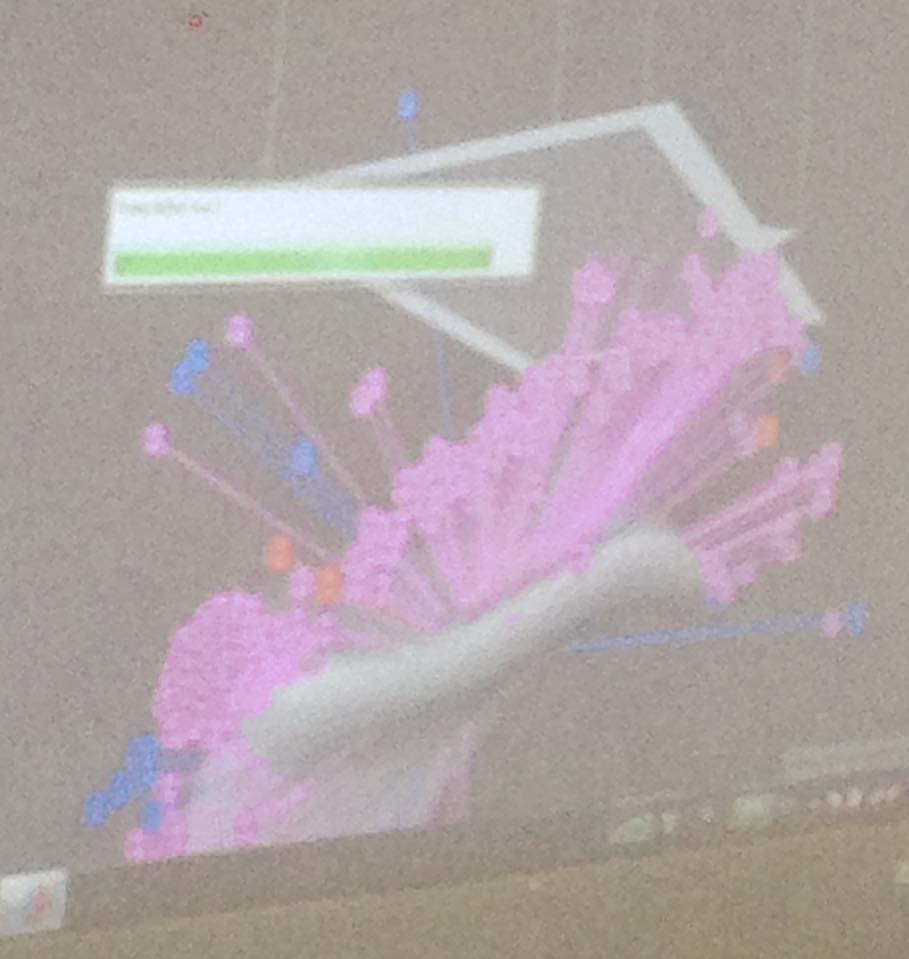
Finally, sent to print in the Cube Pro at 30% of the real size.
Using the same procedure first explained in the Thread Cone exercise.
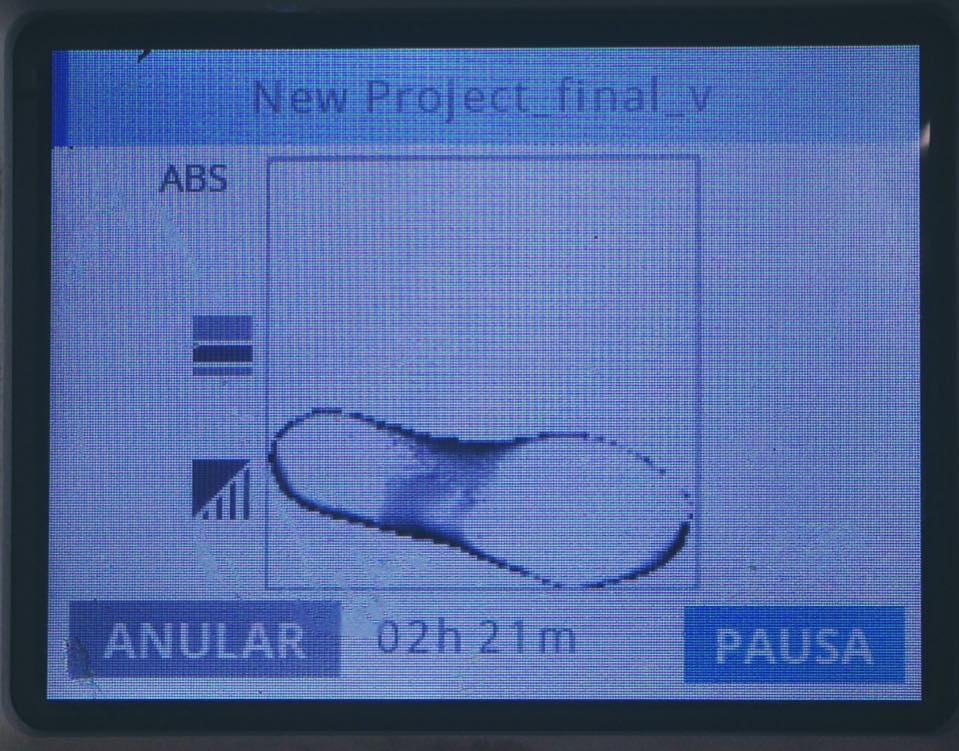
Results:
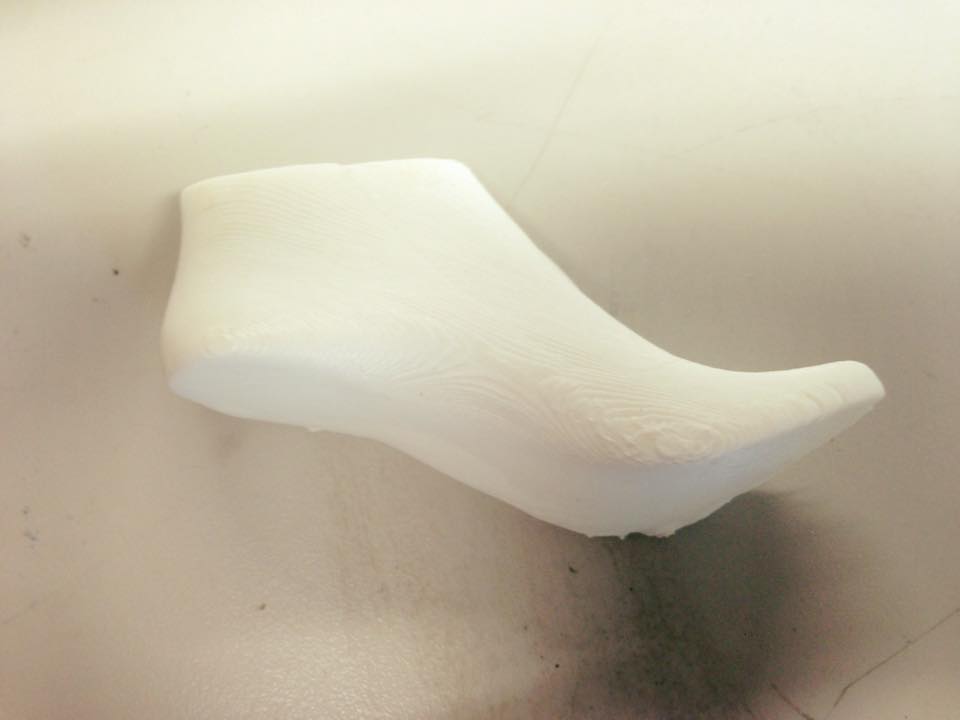
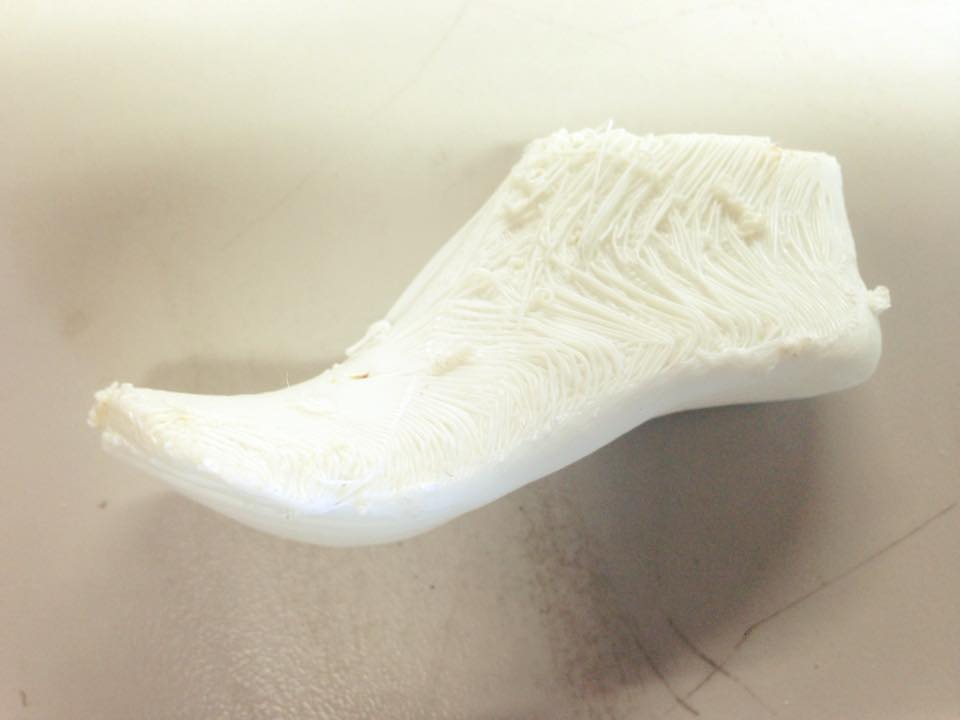
But the other side had some problems.
s
This was the side that goes to rest on the tray.
Comparison:
